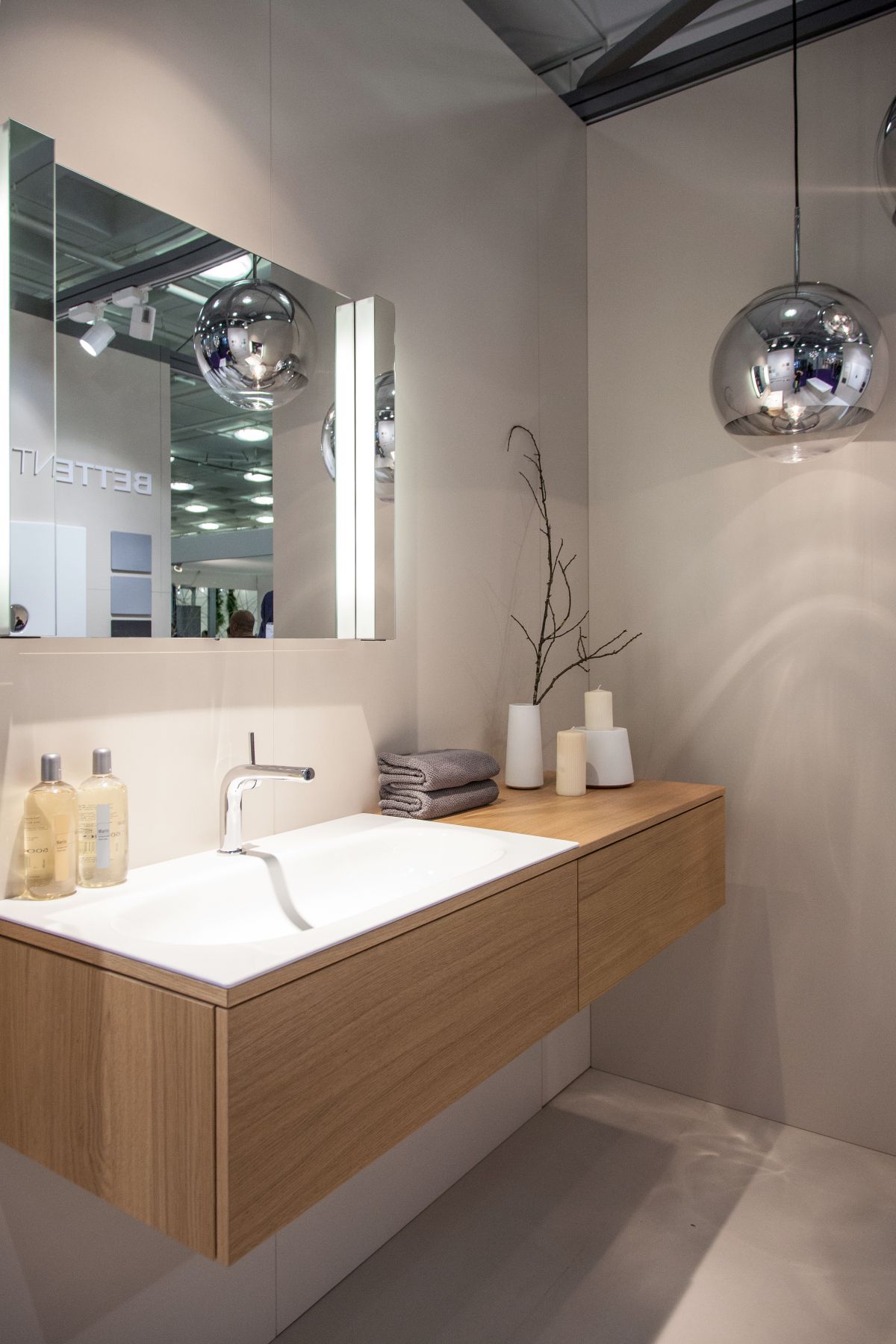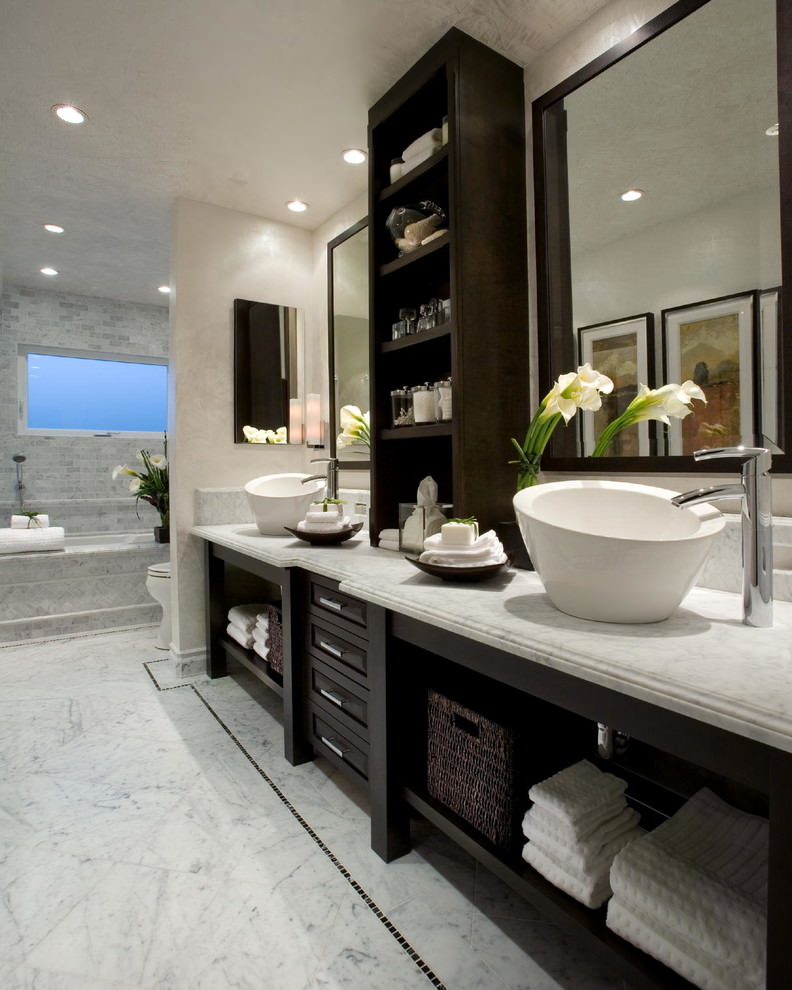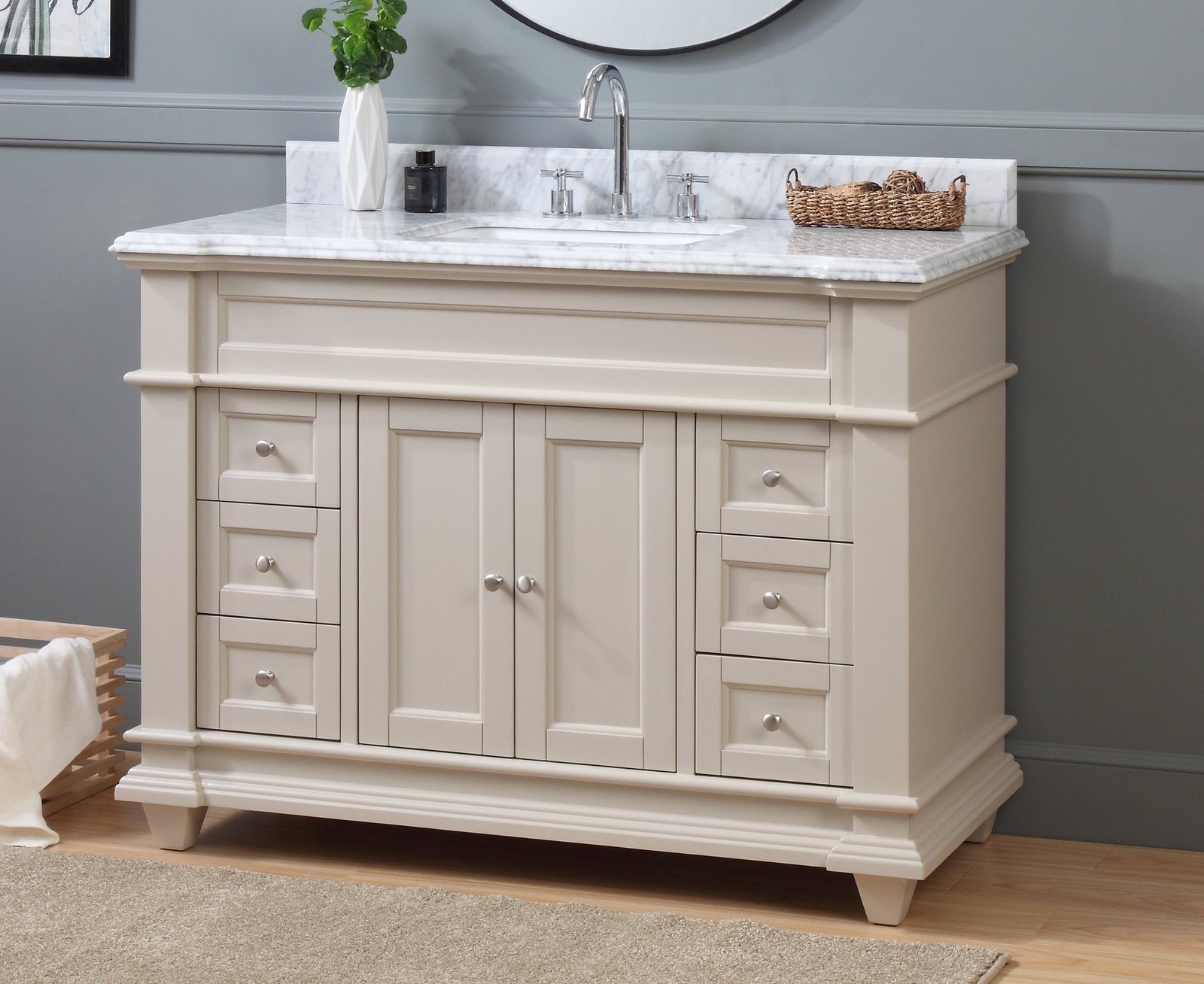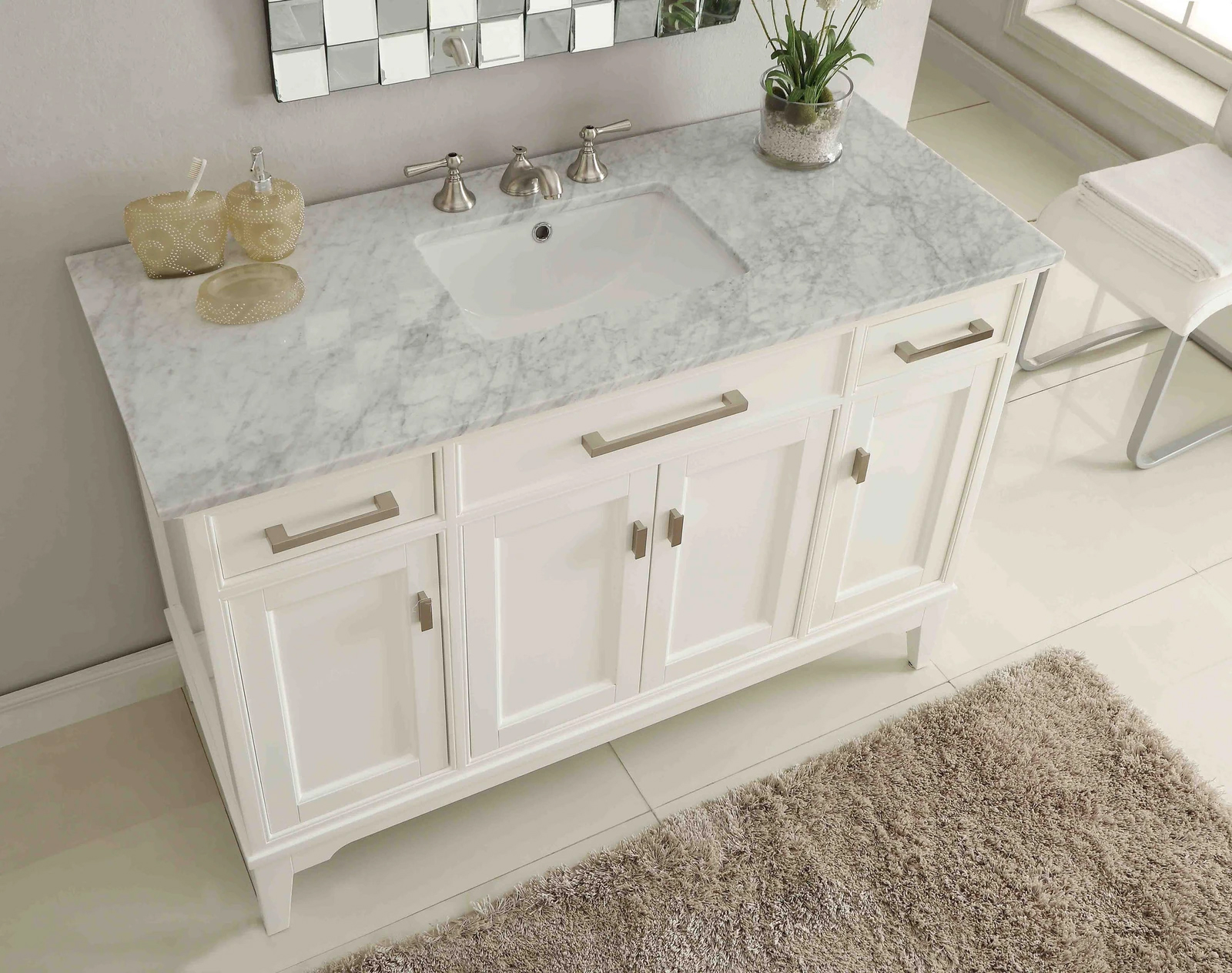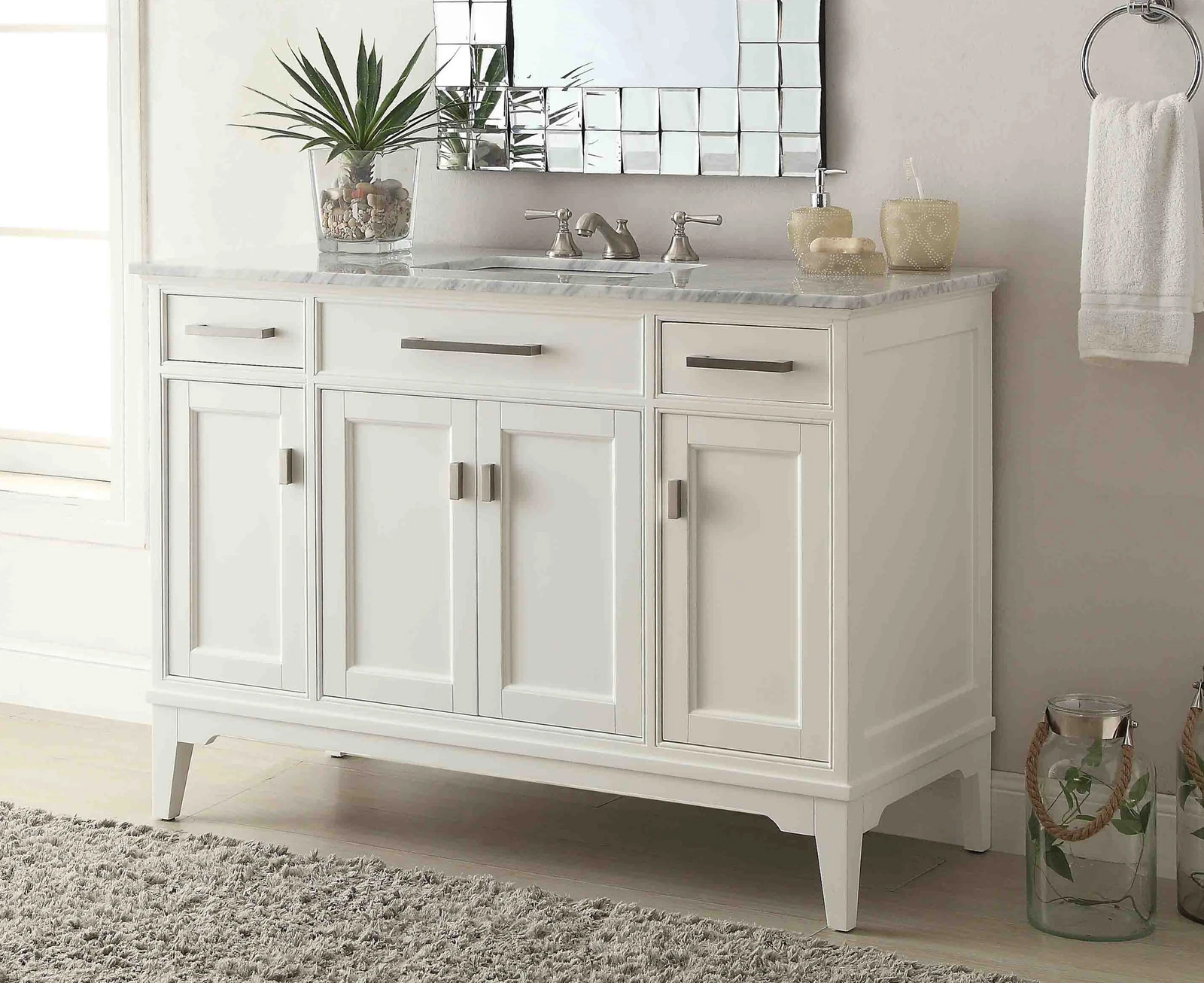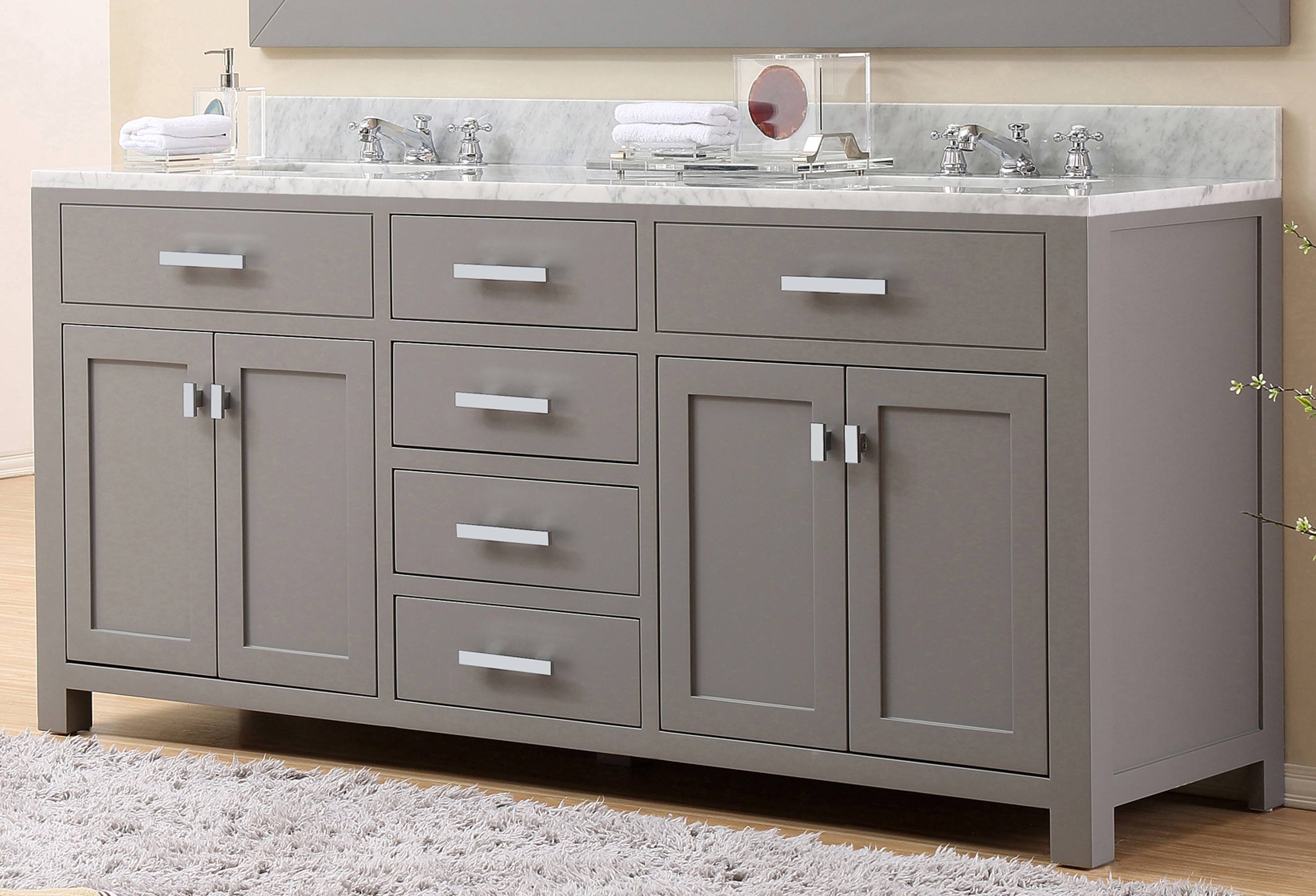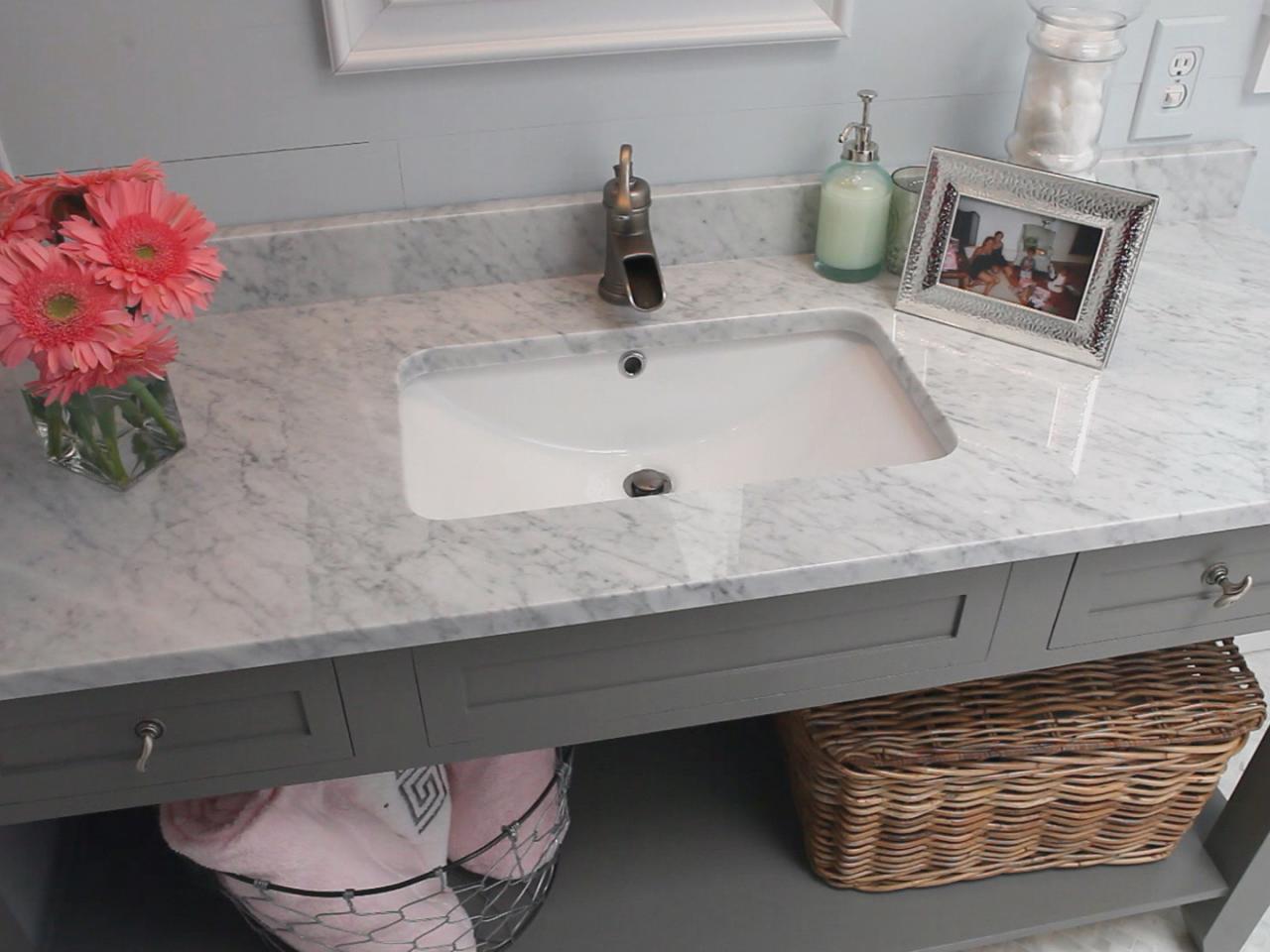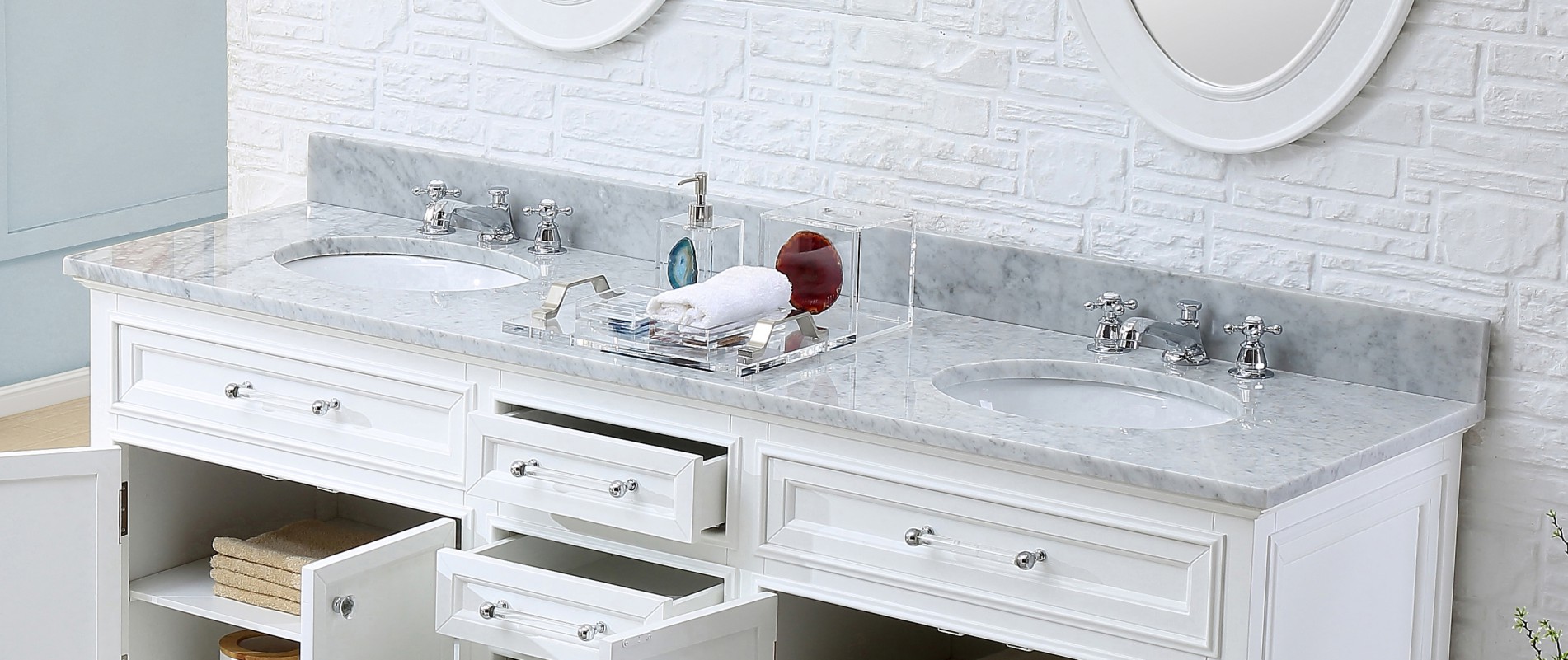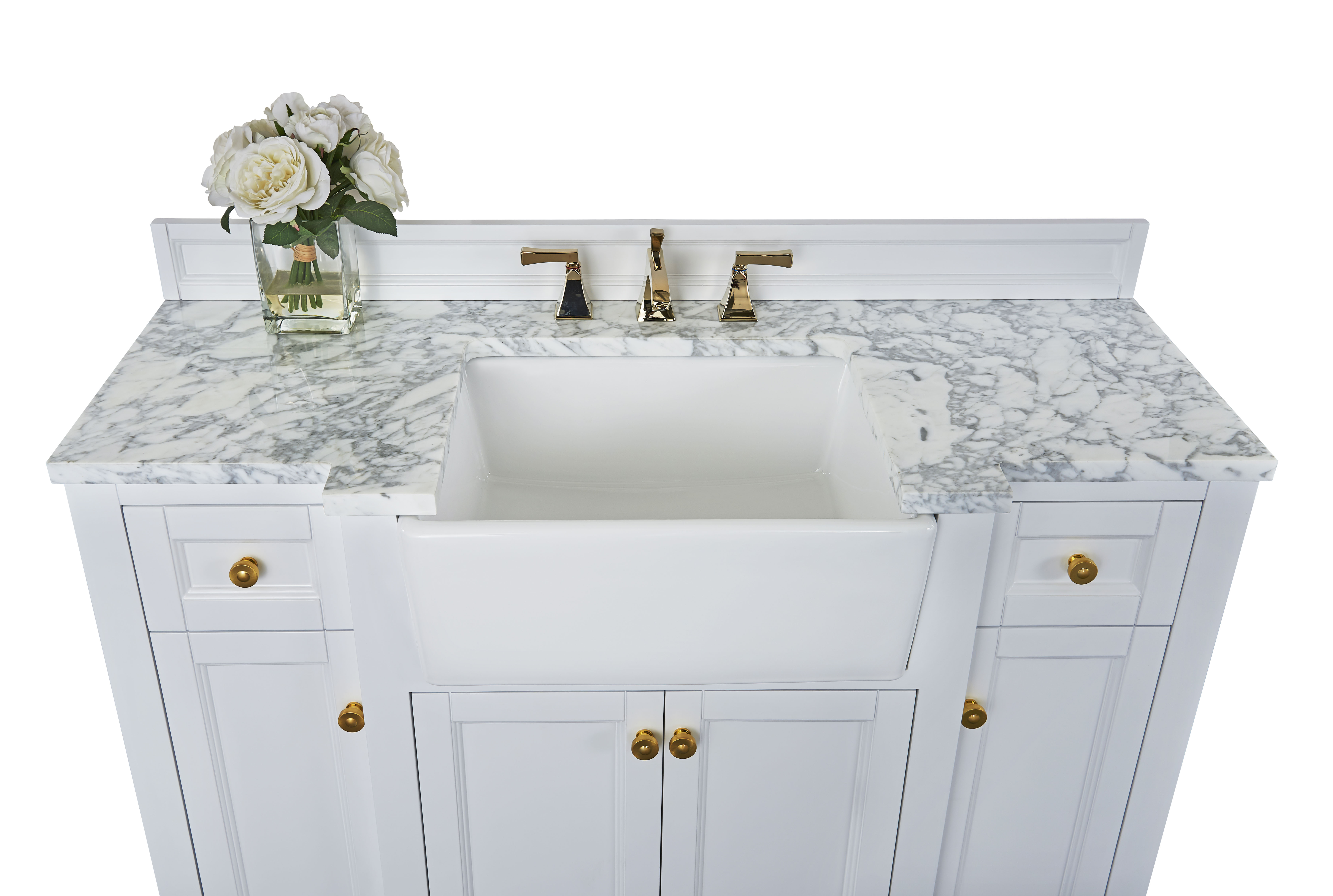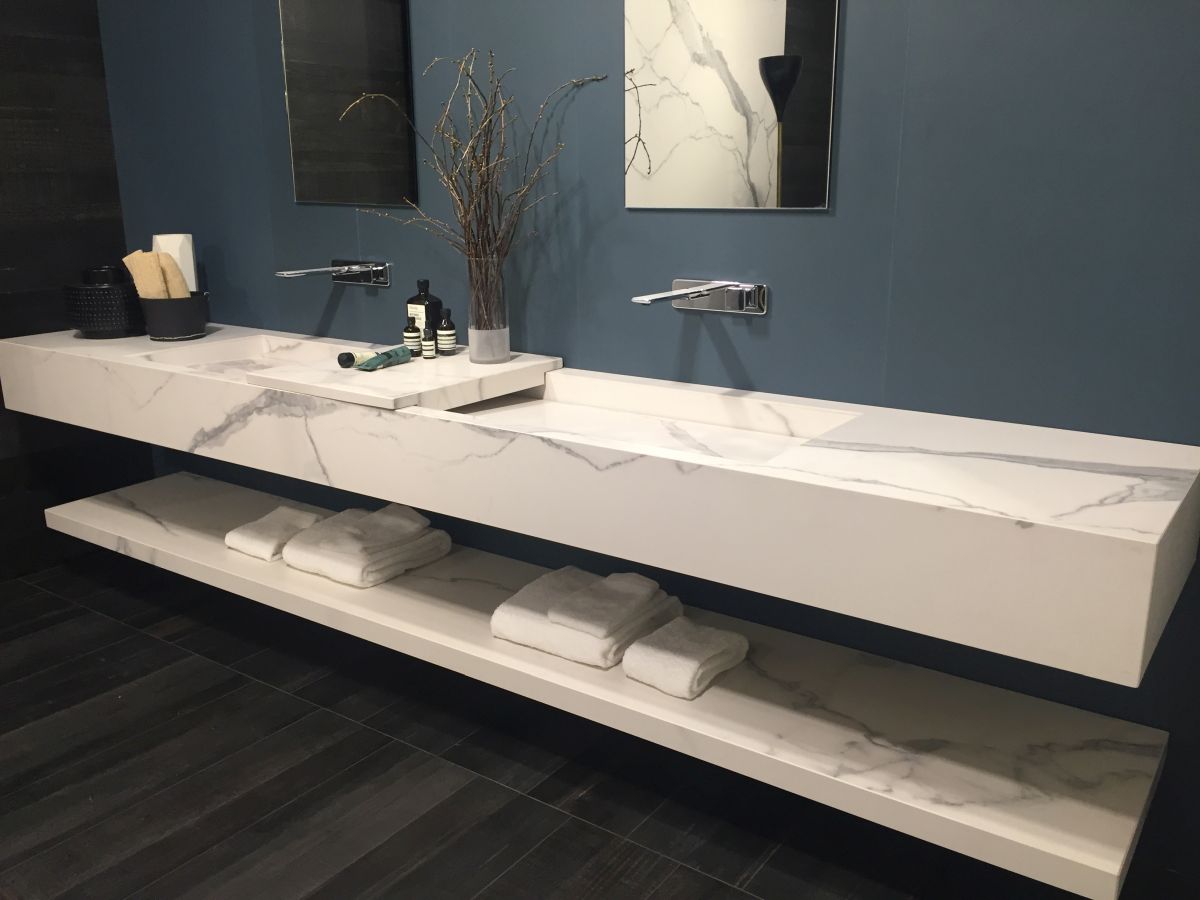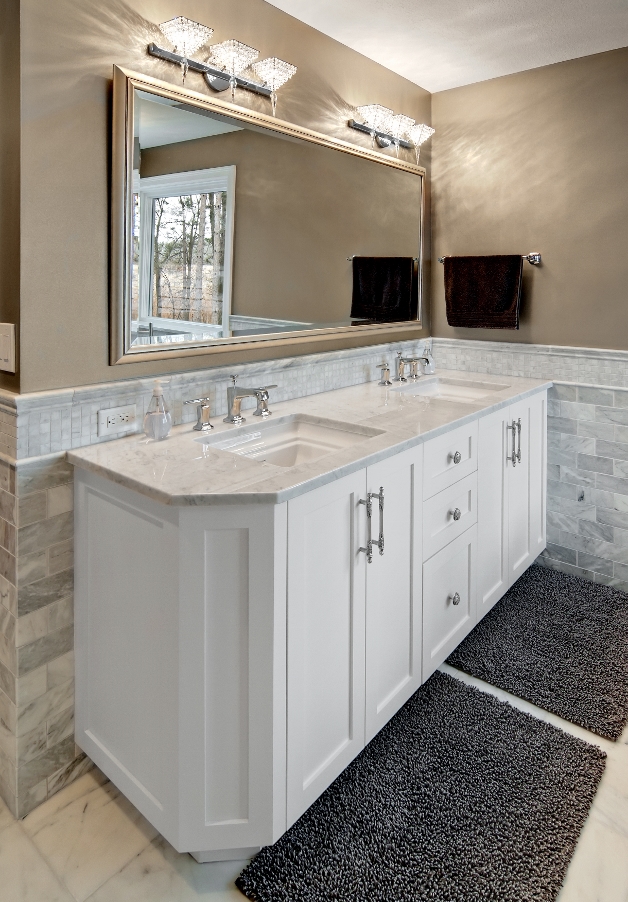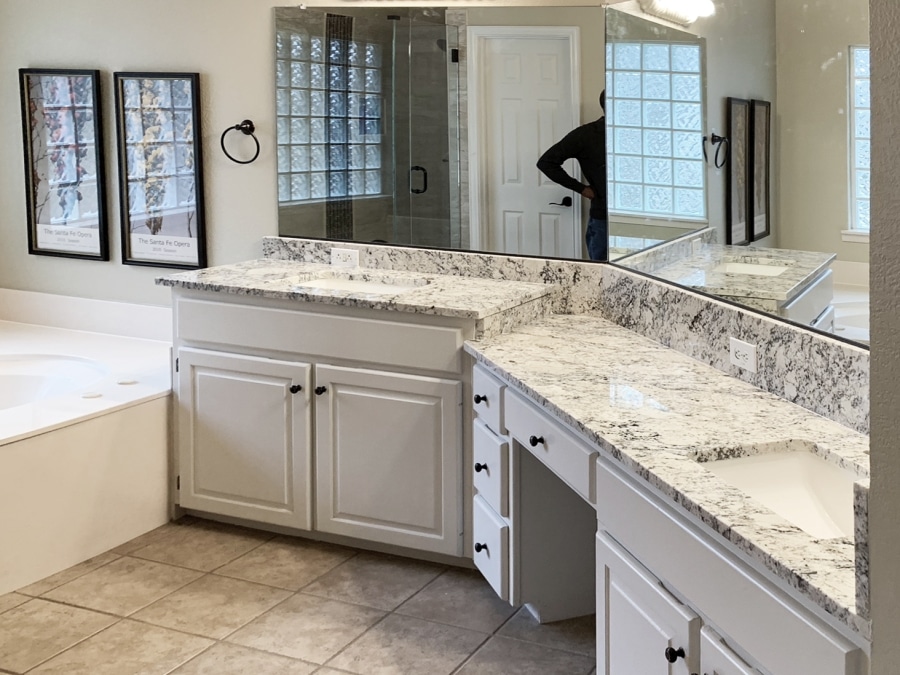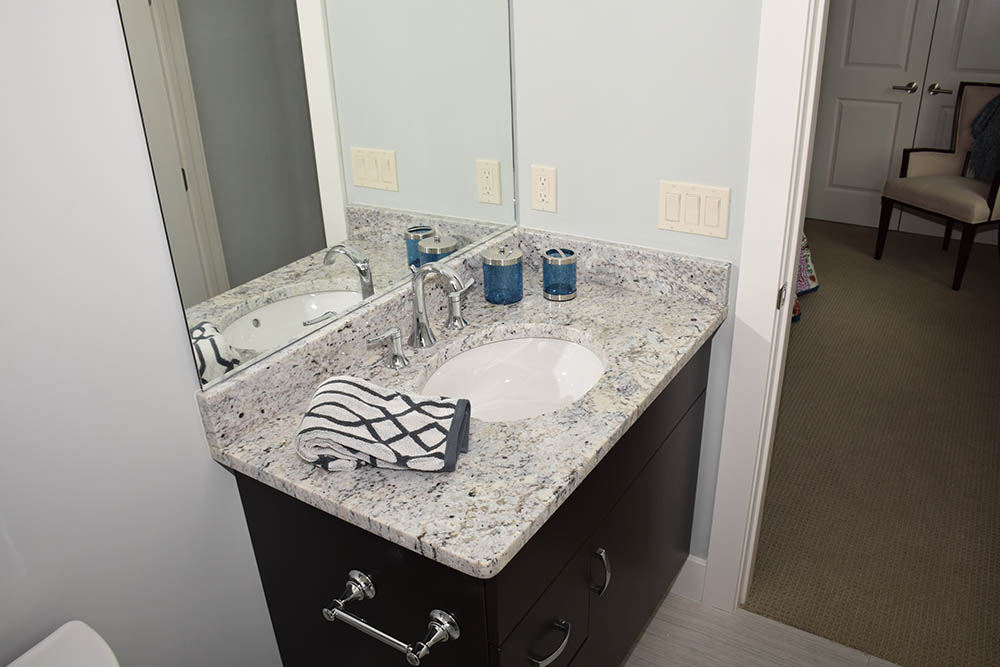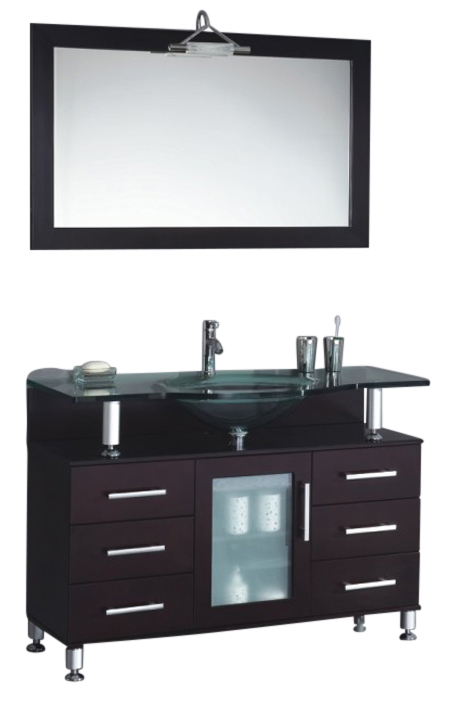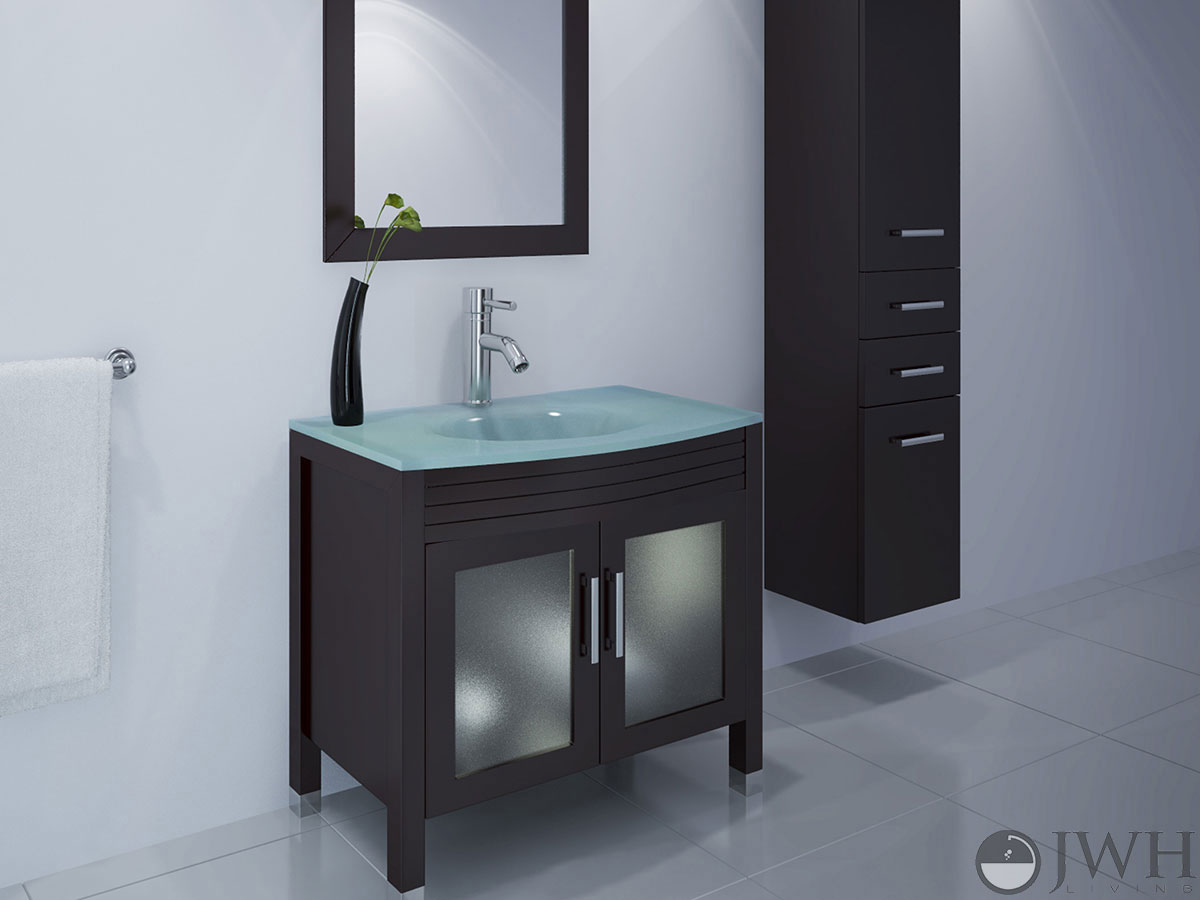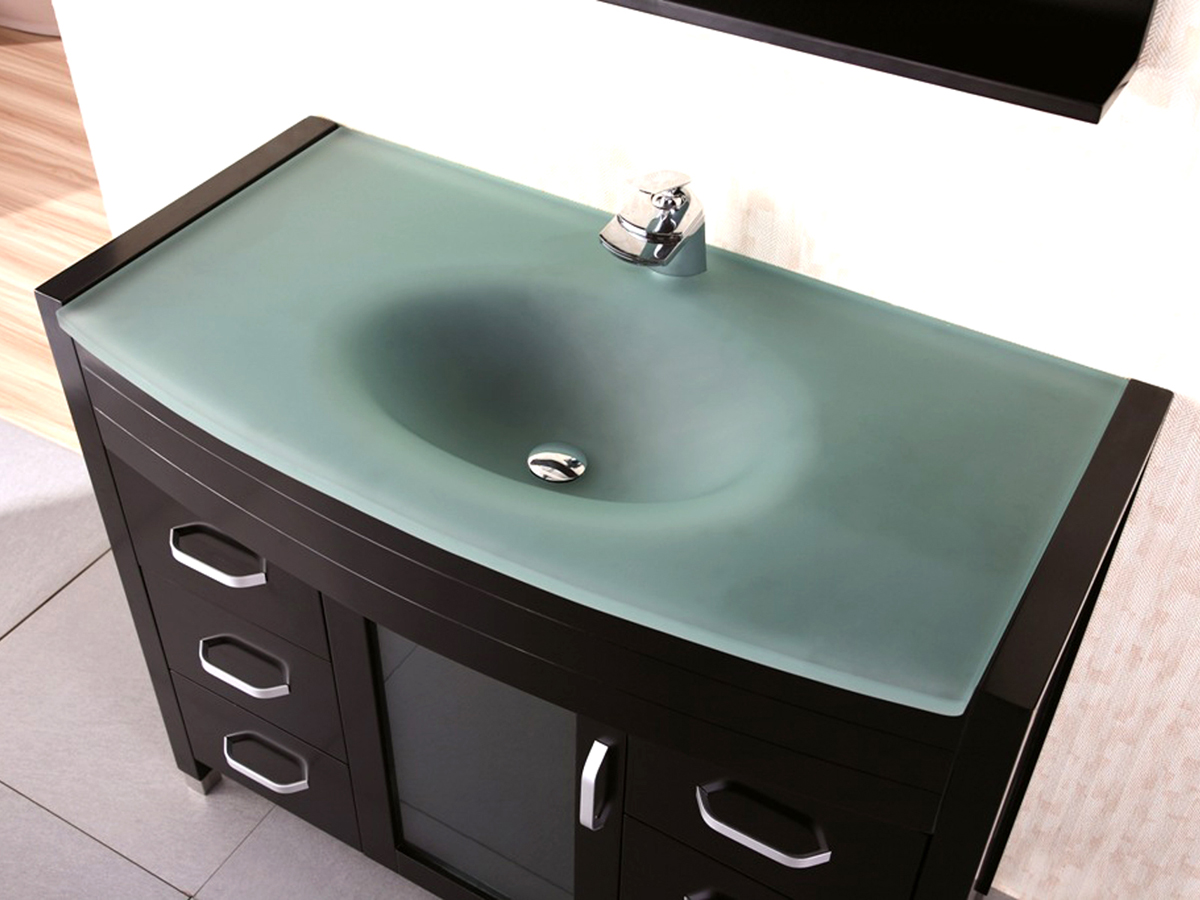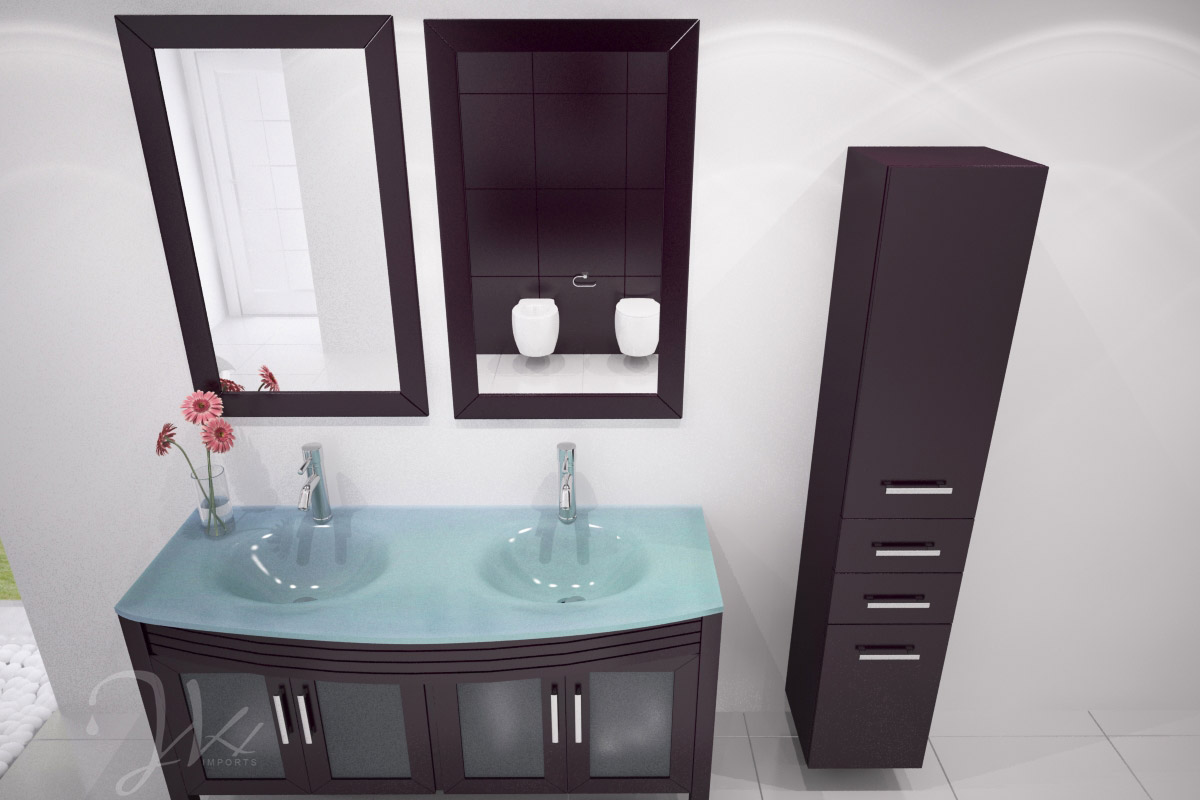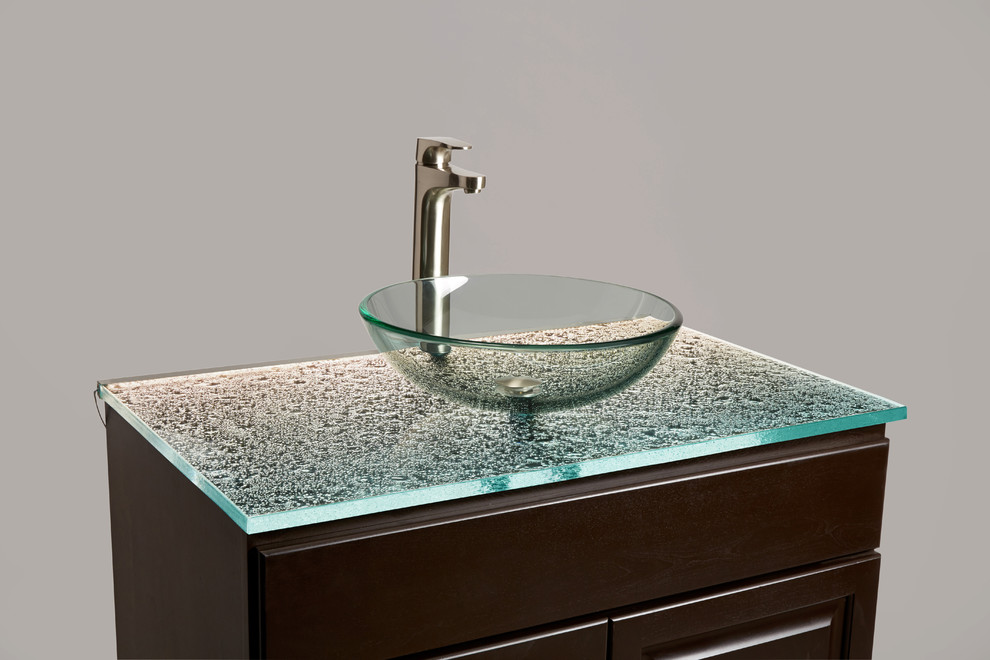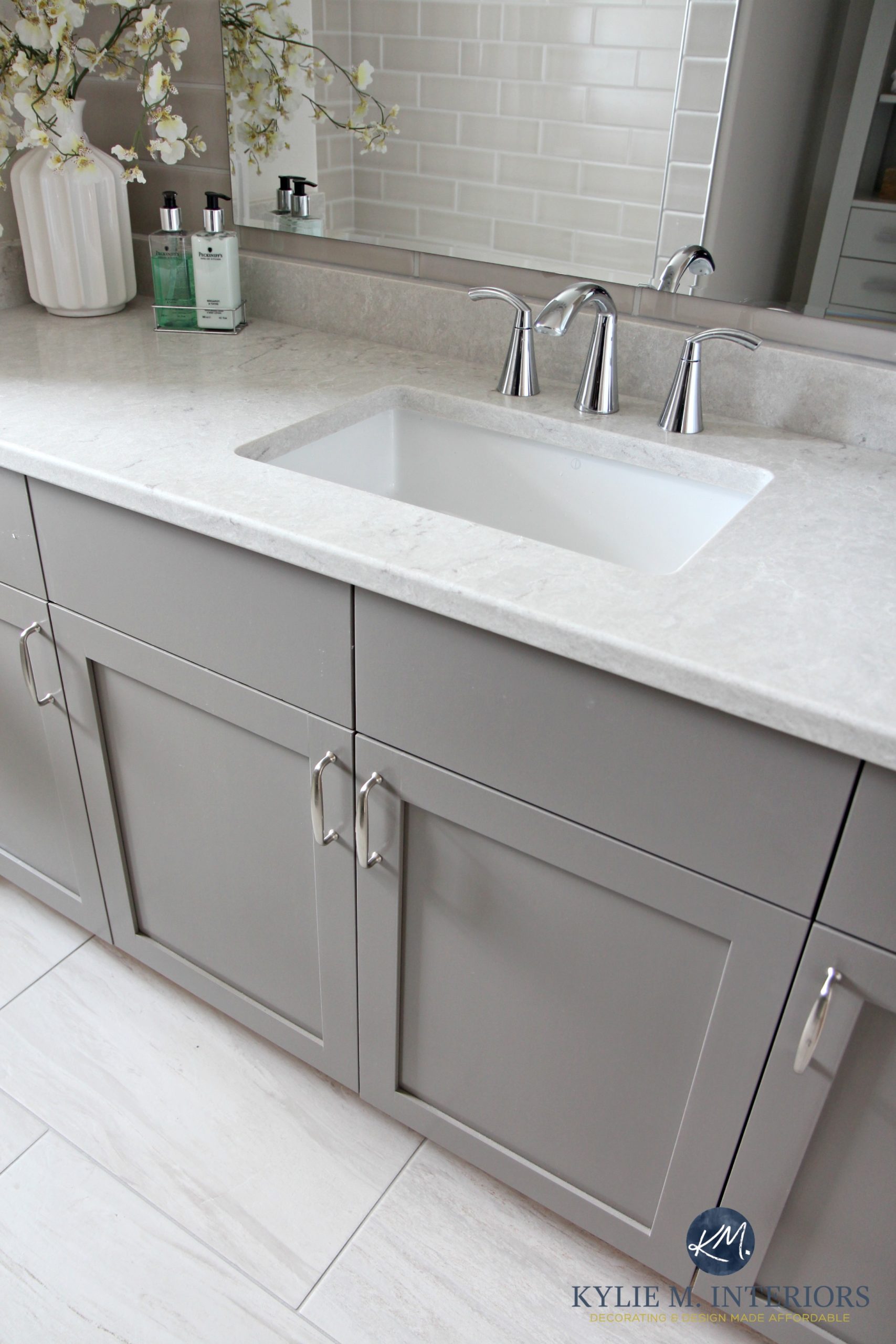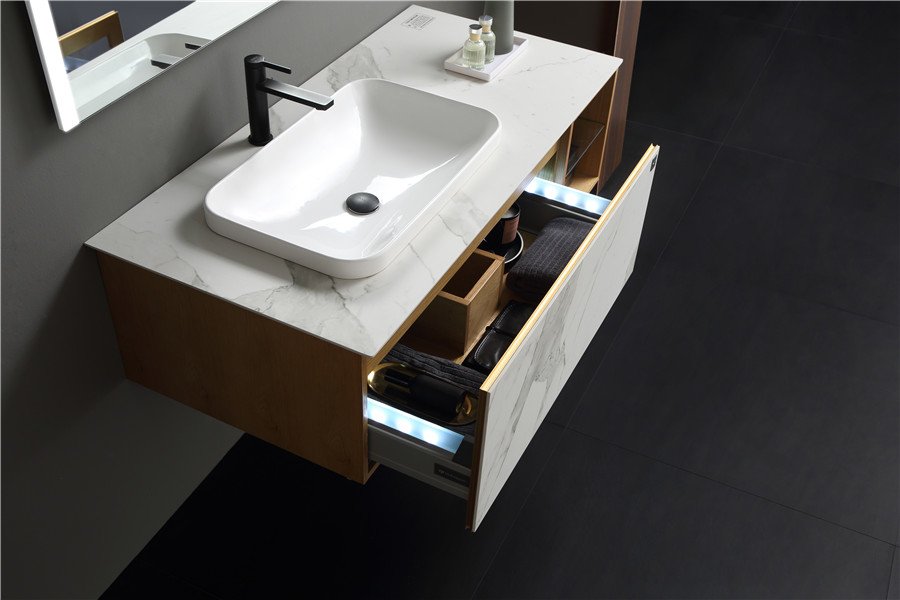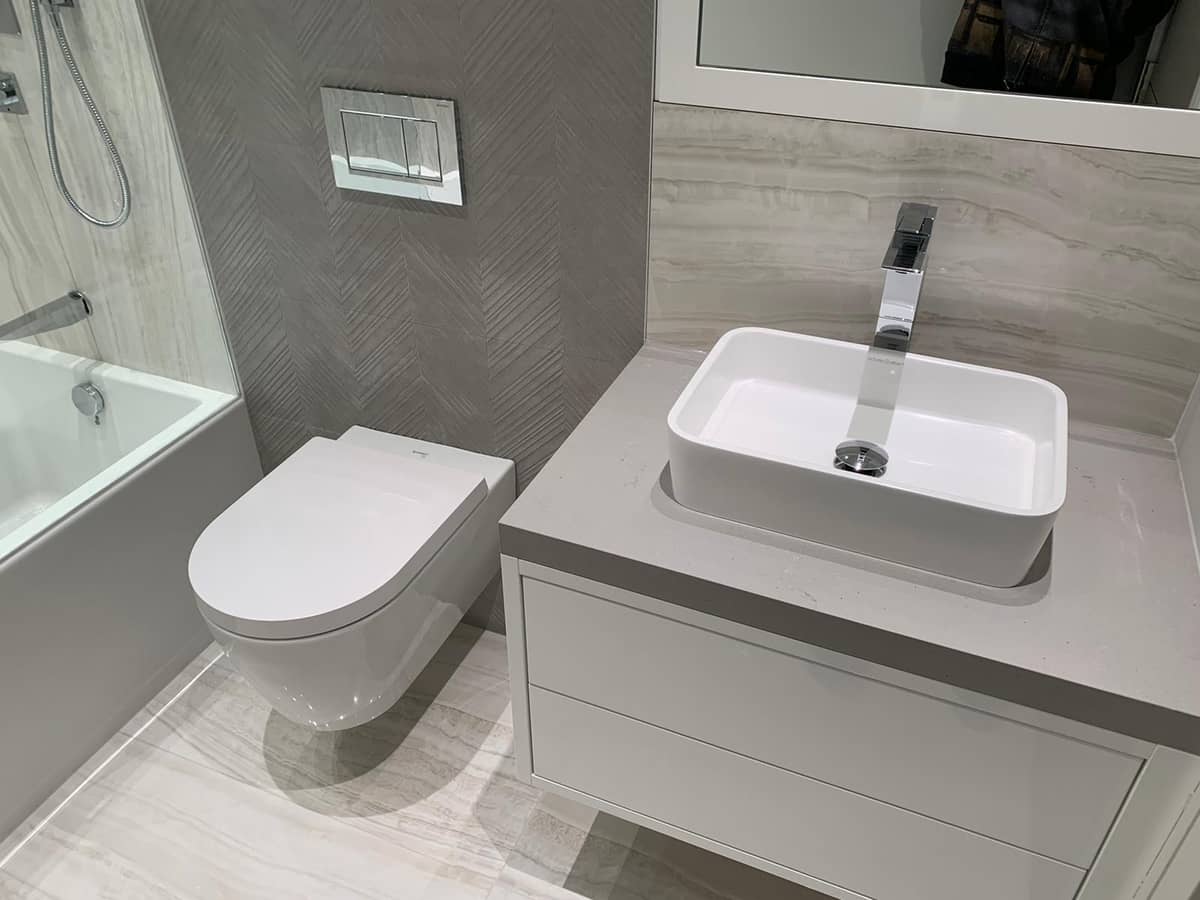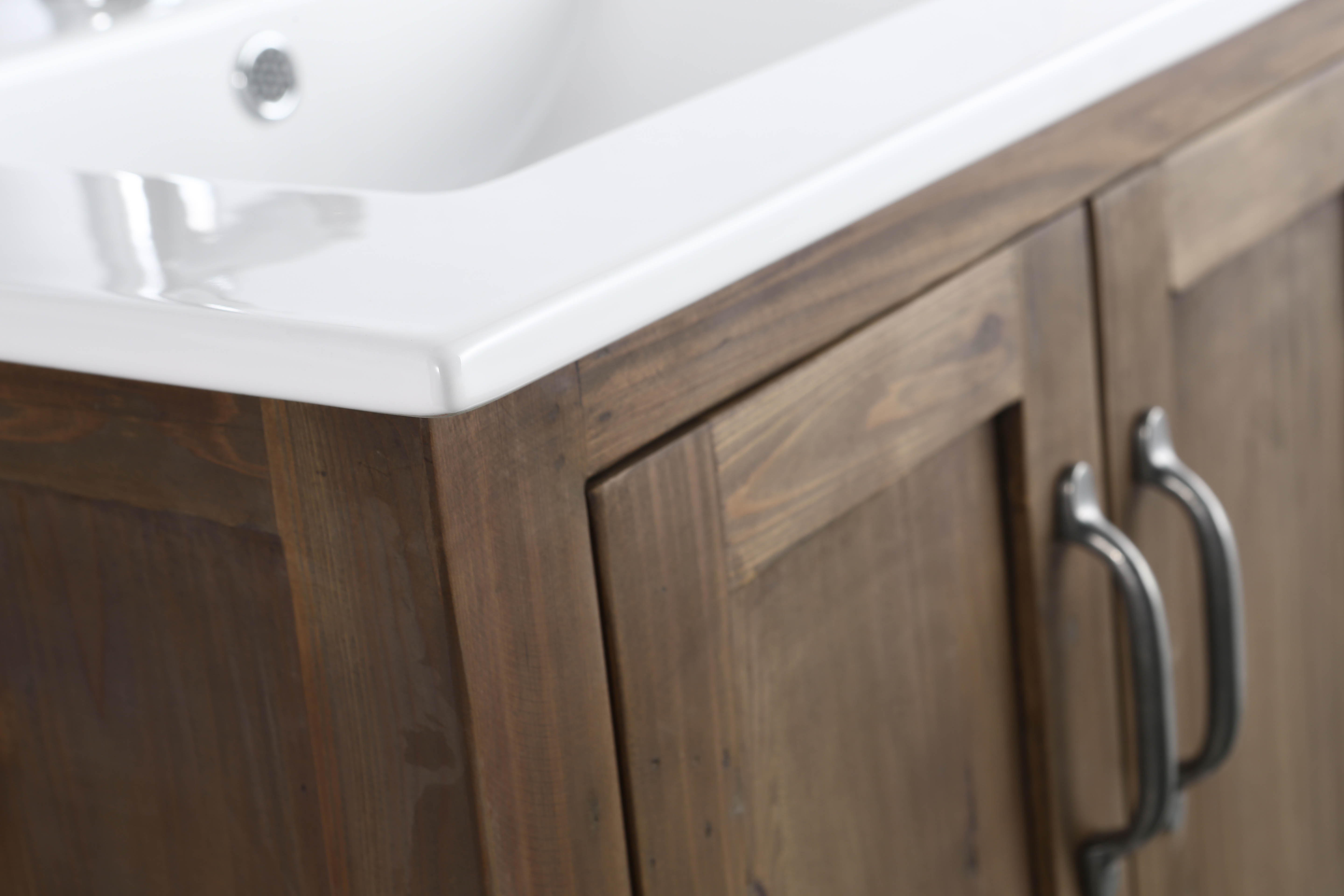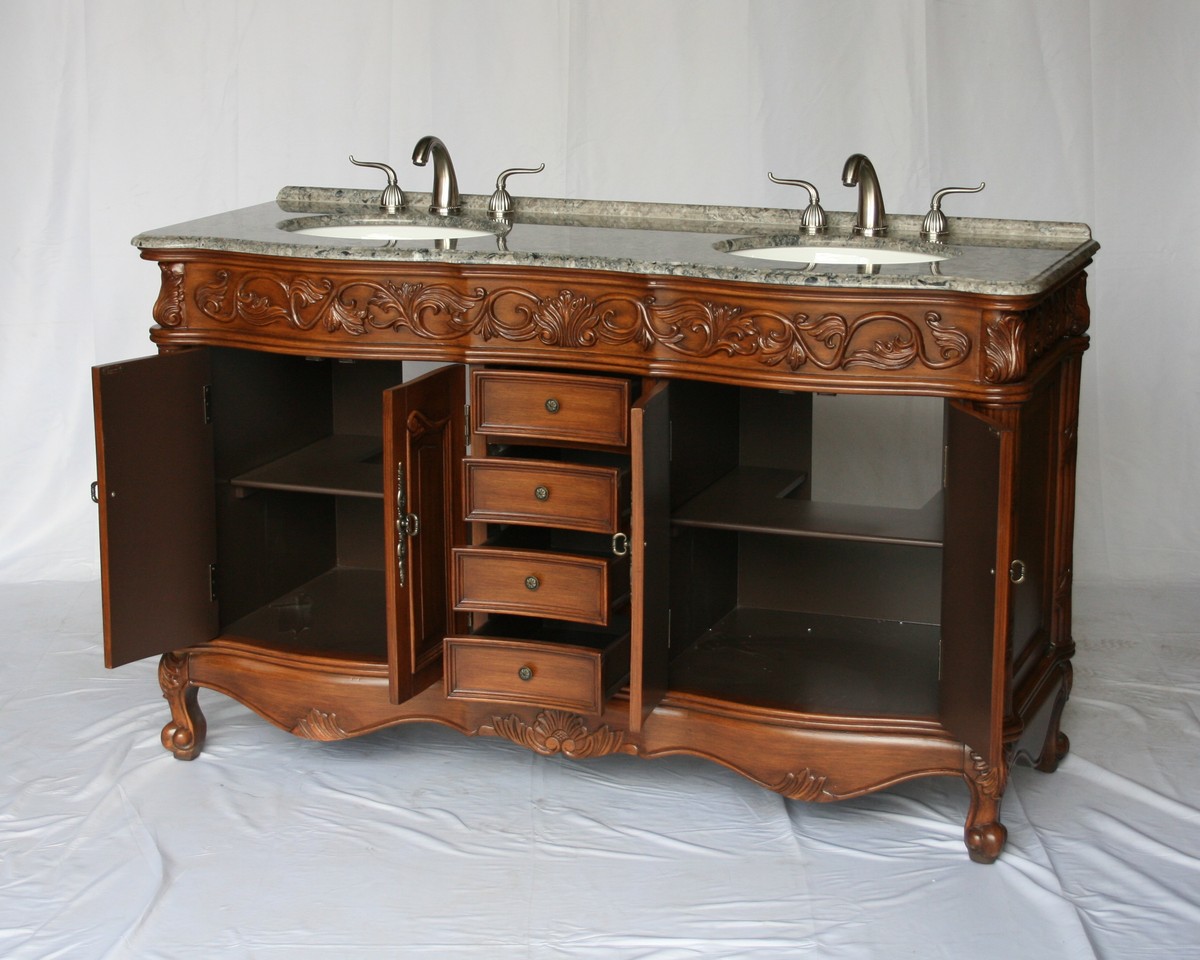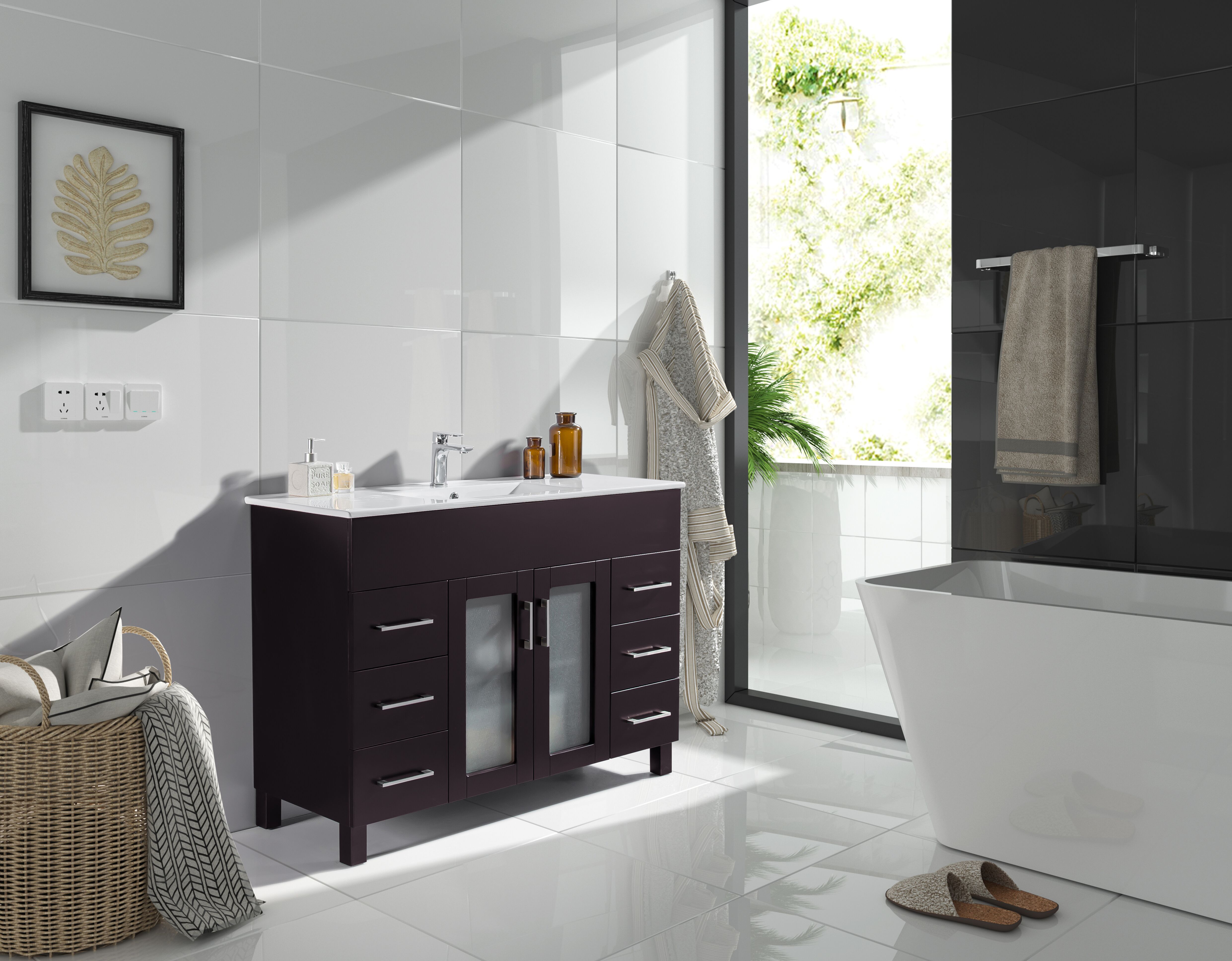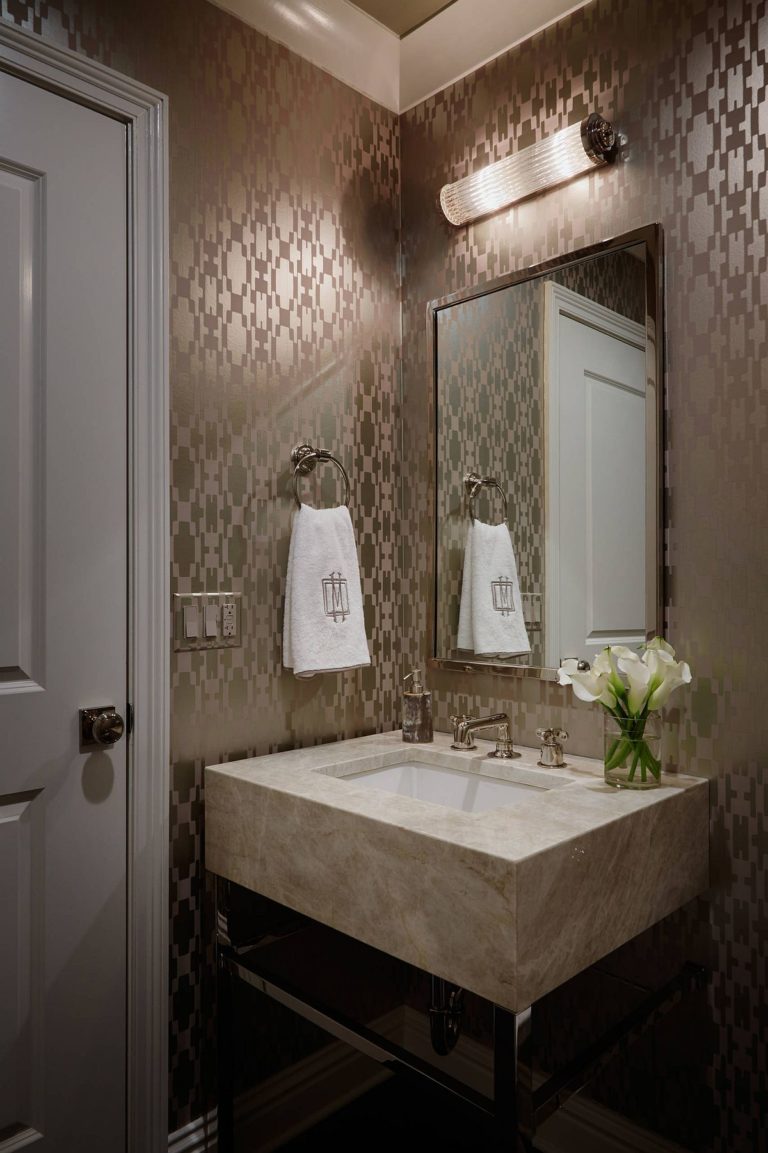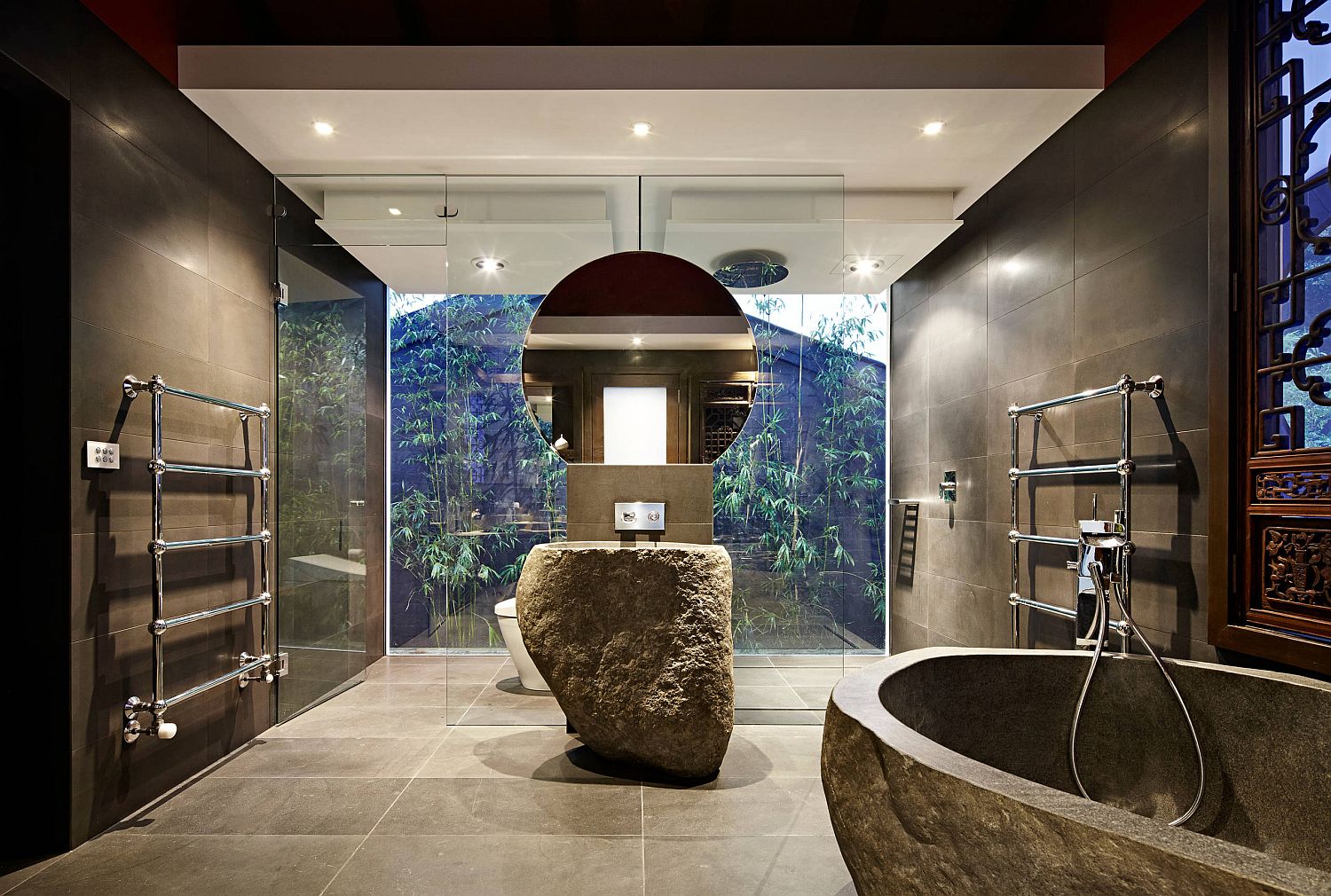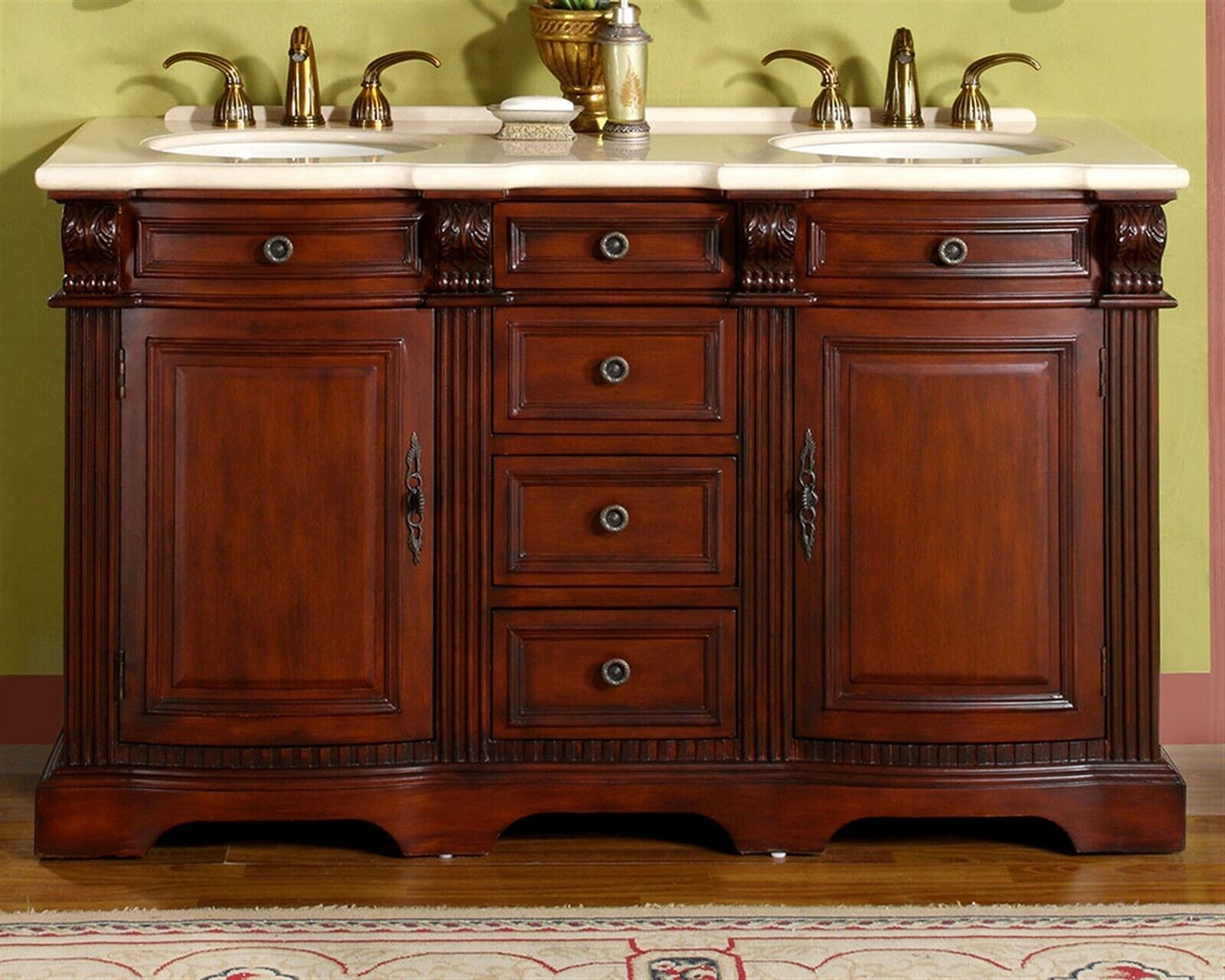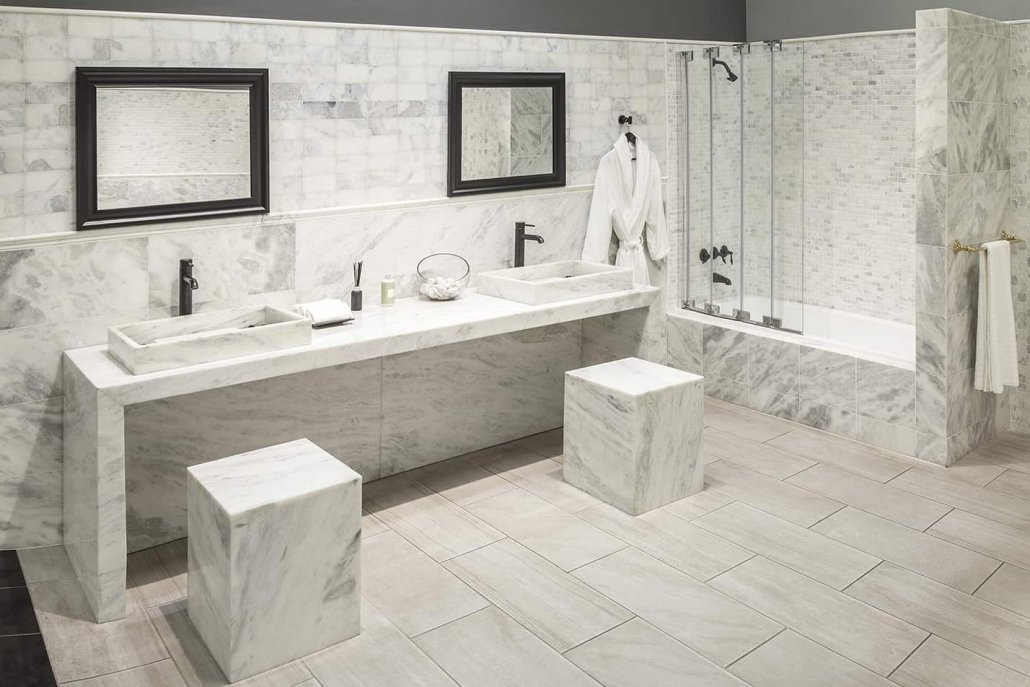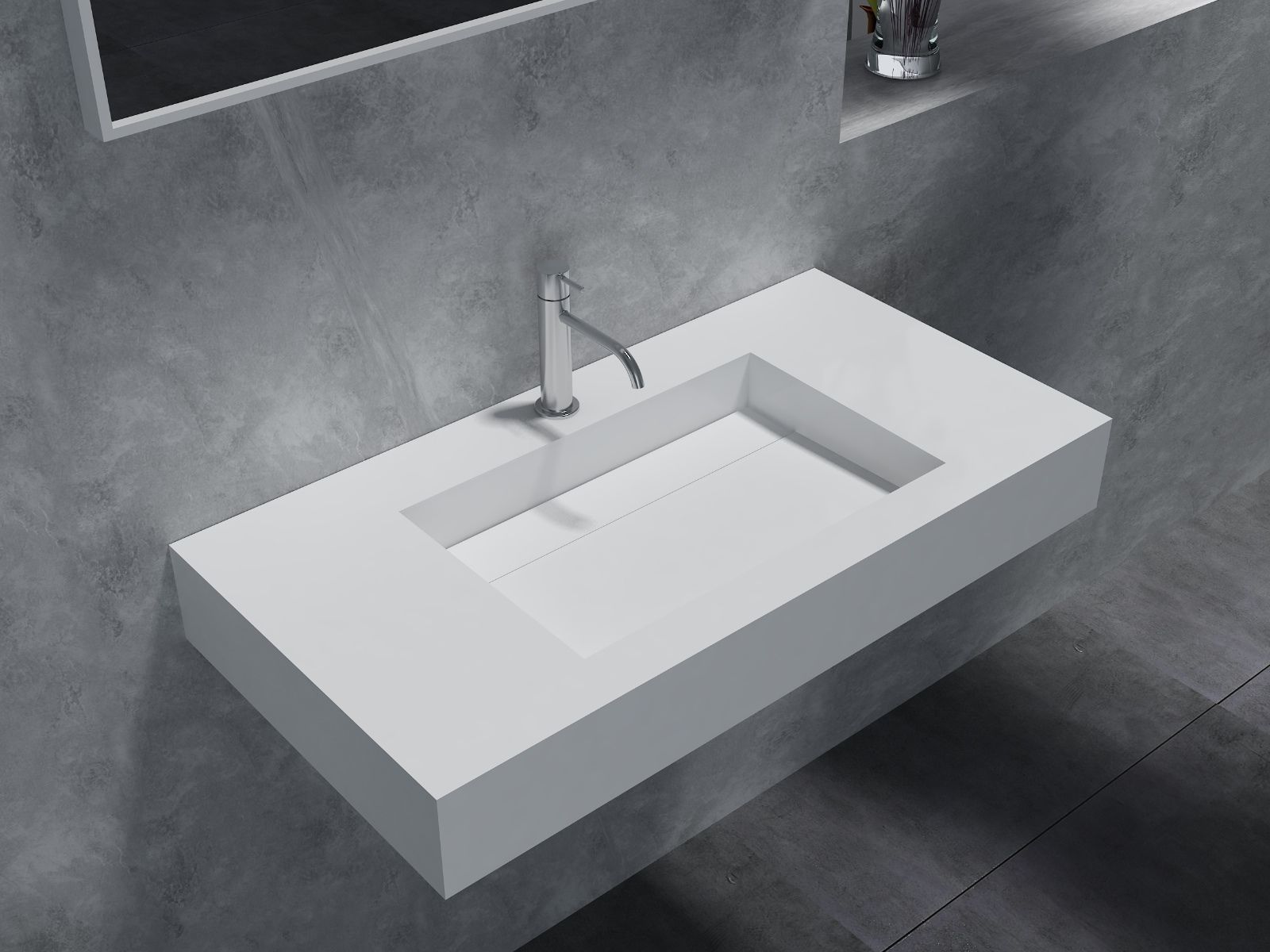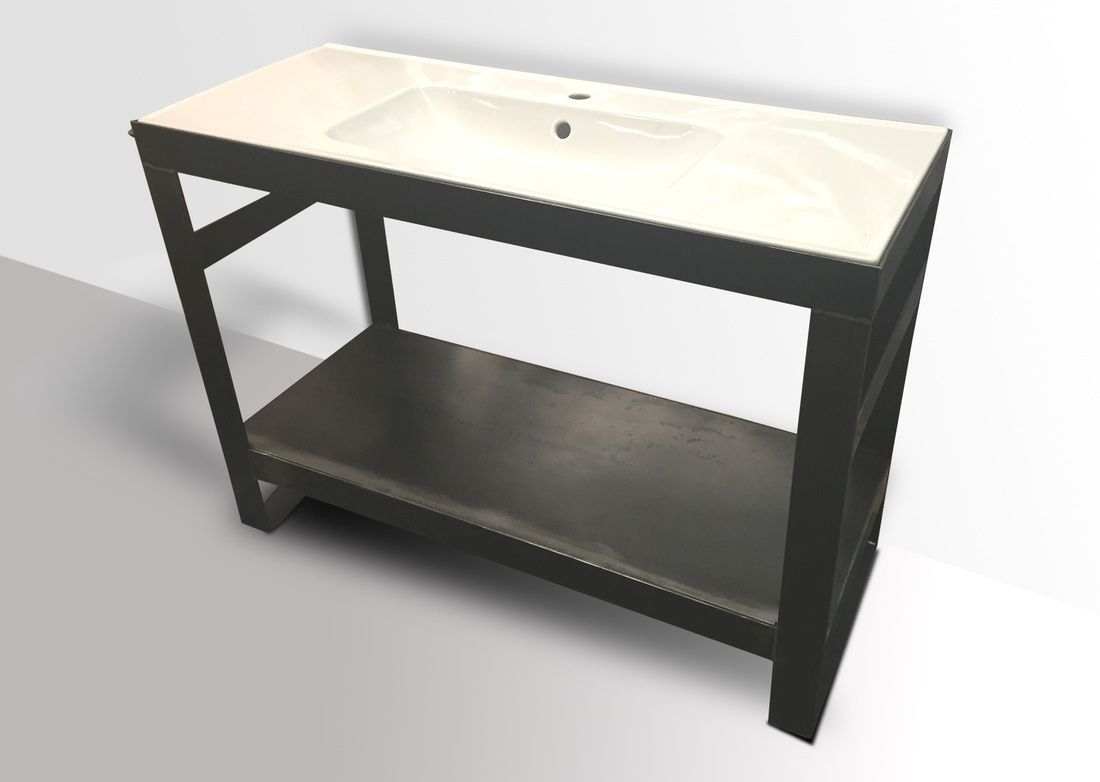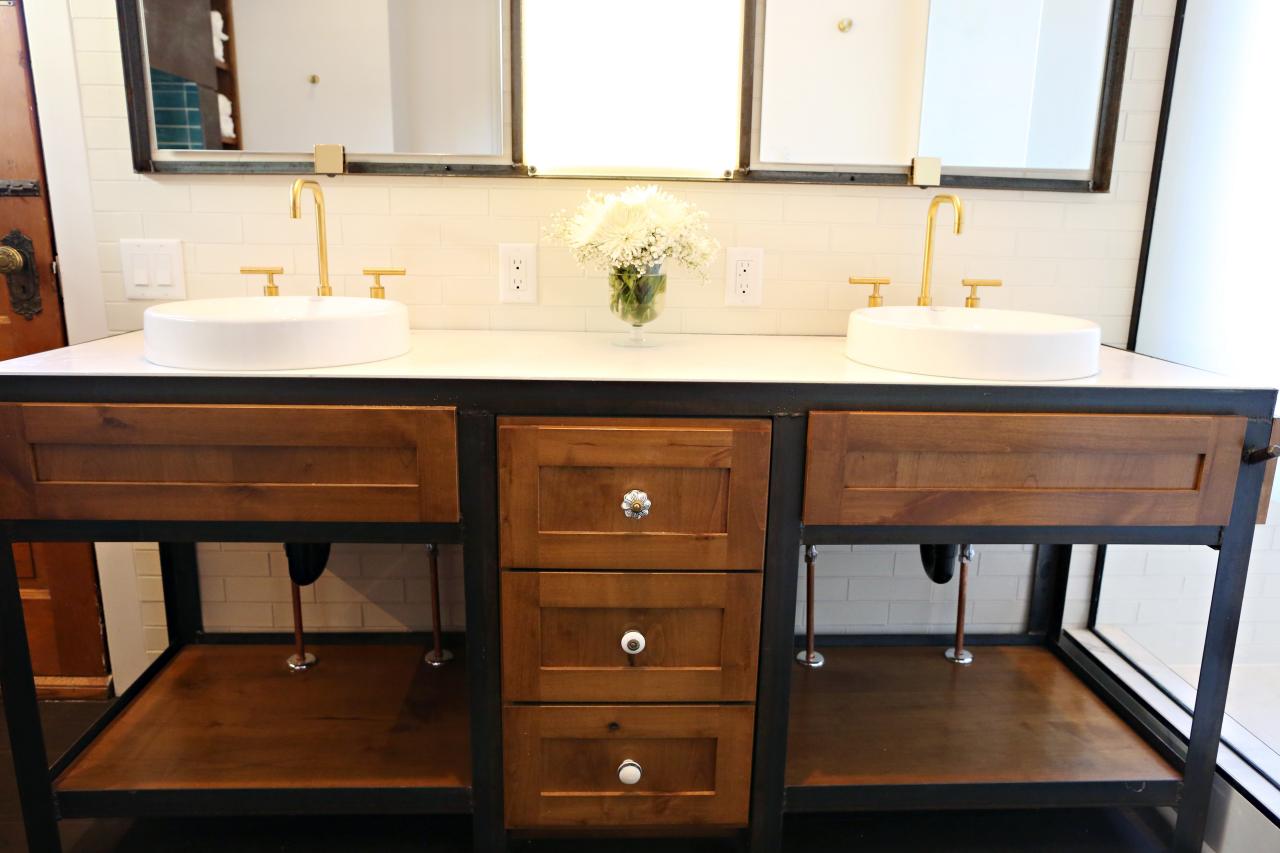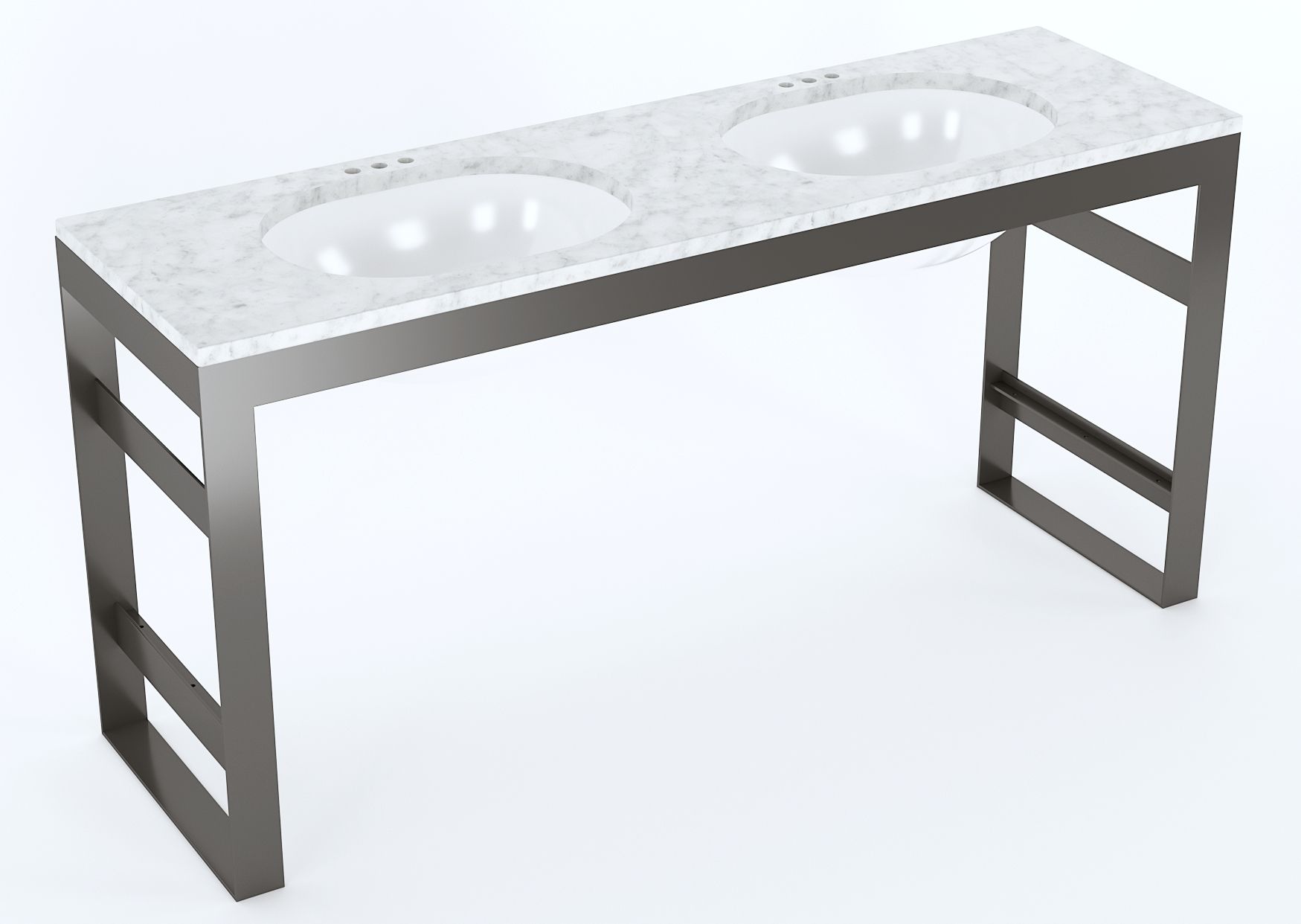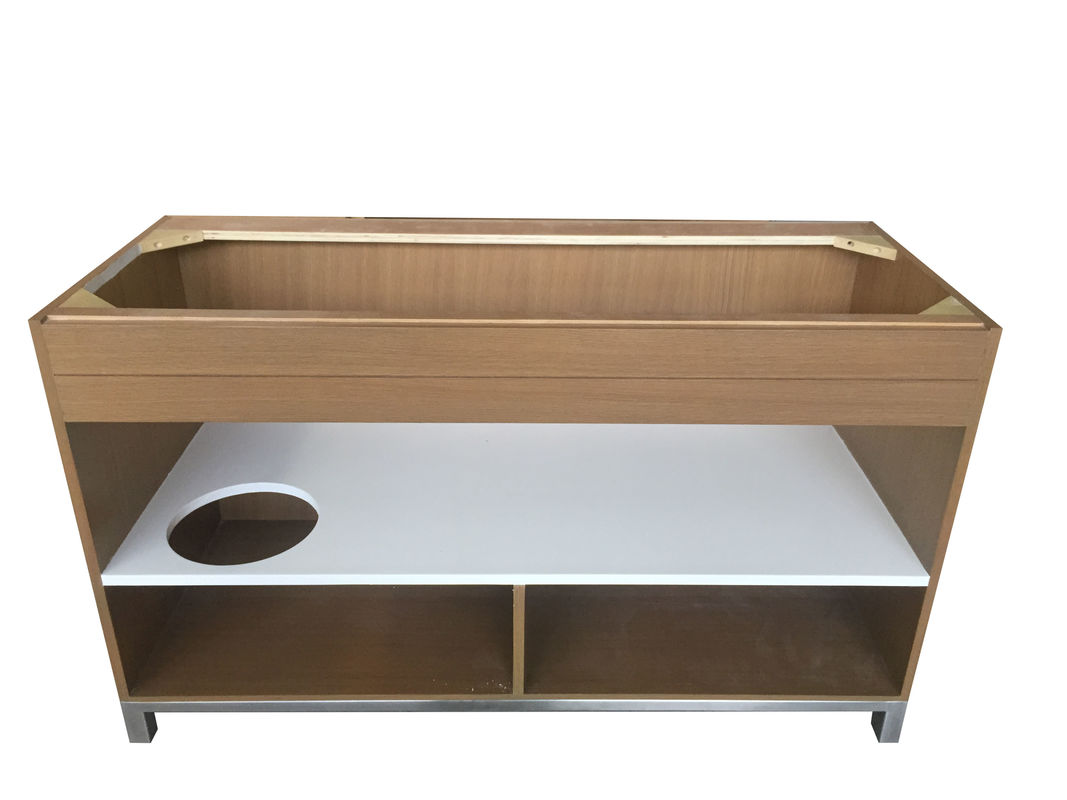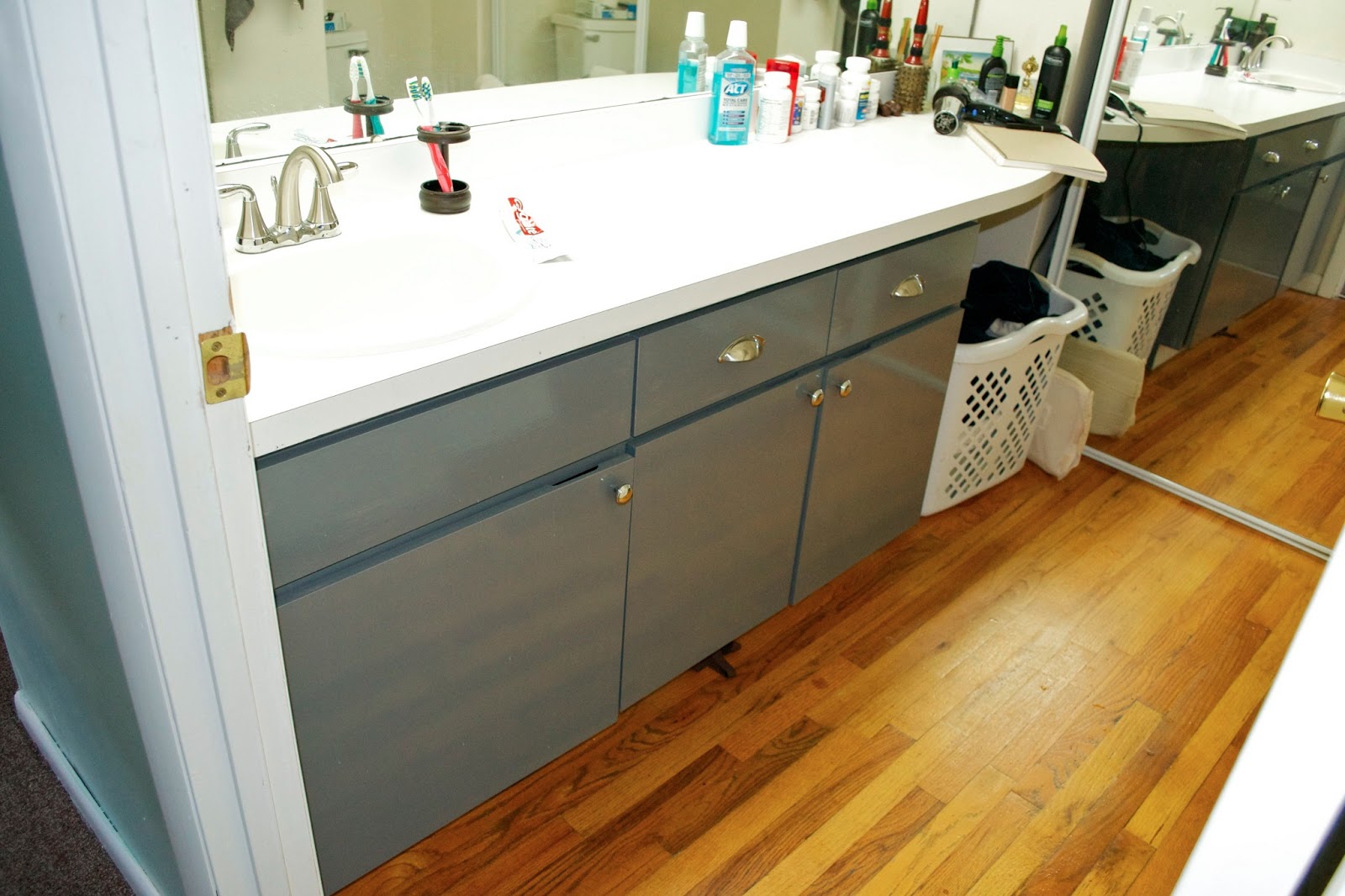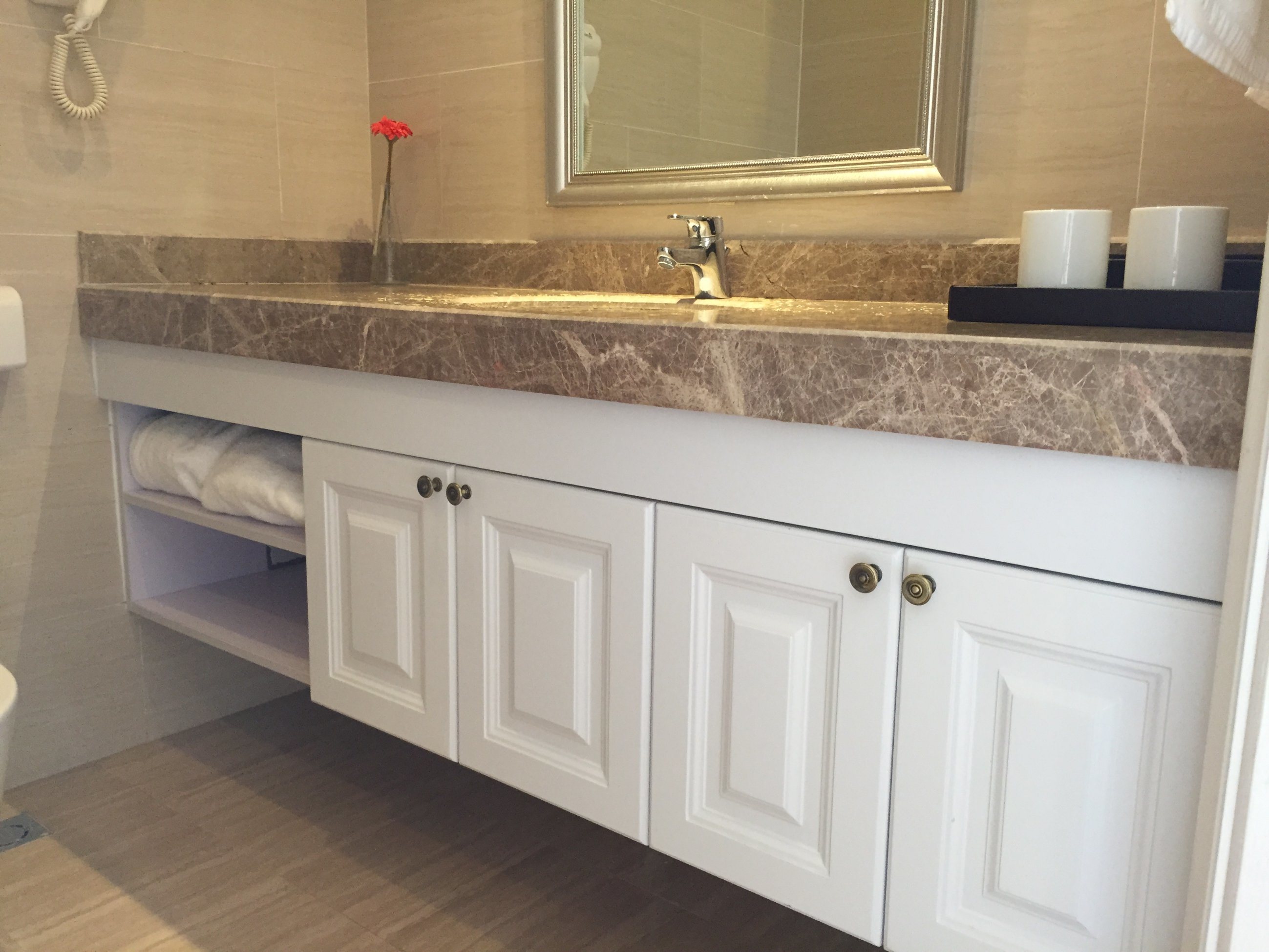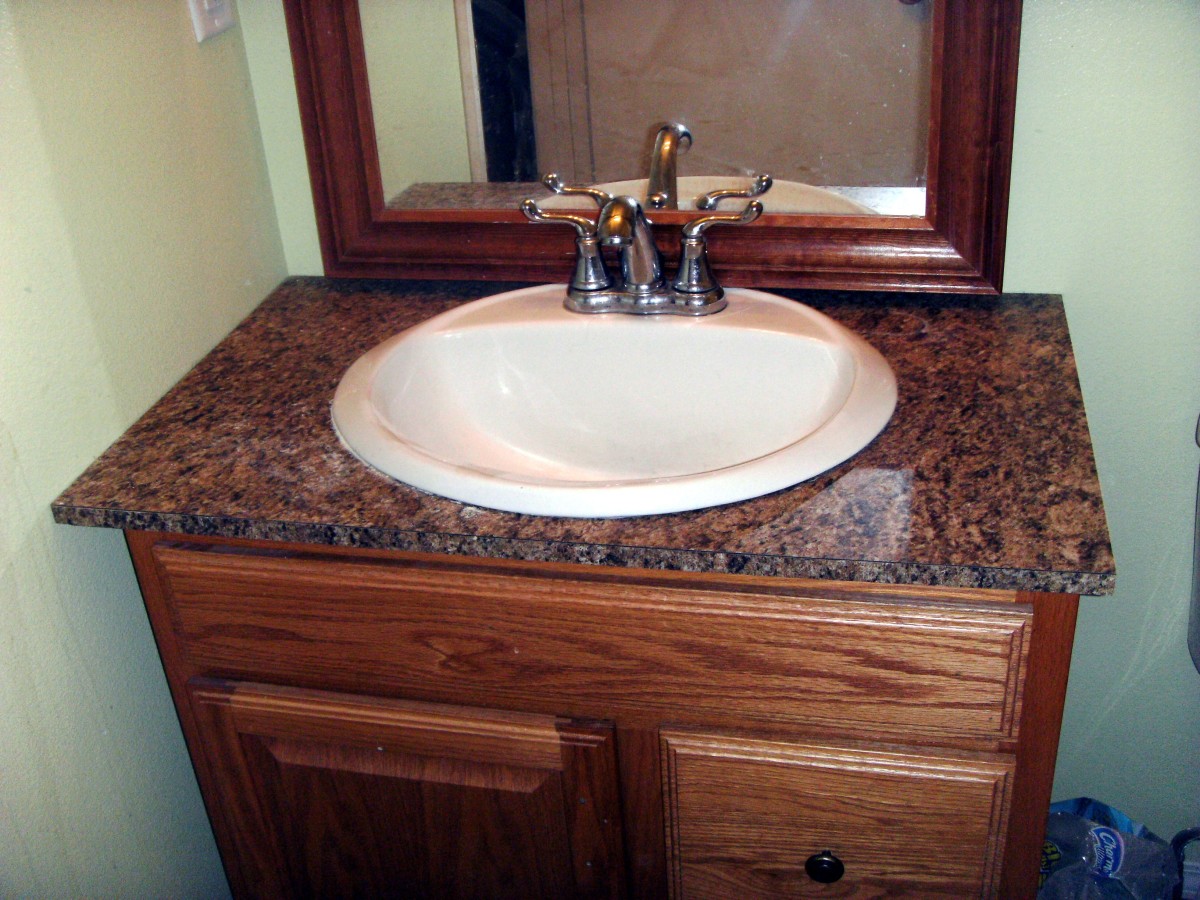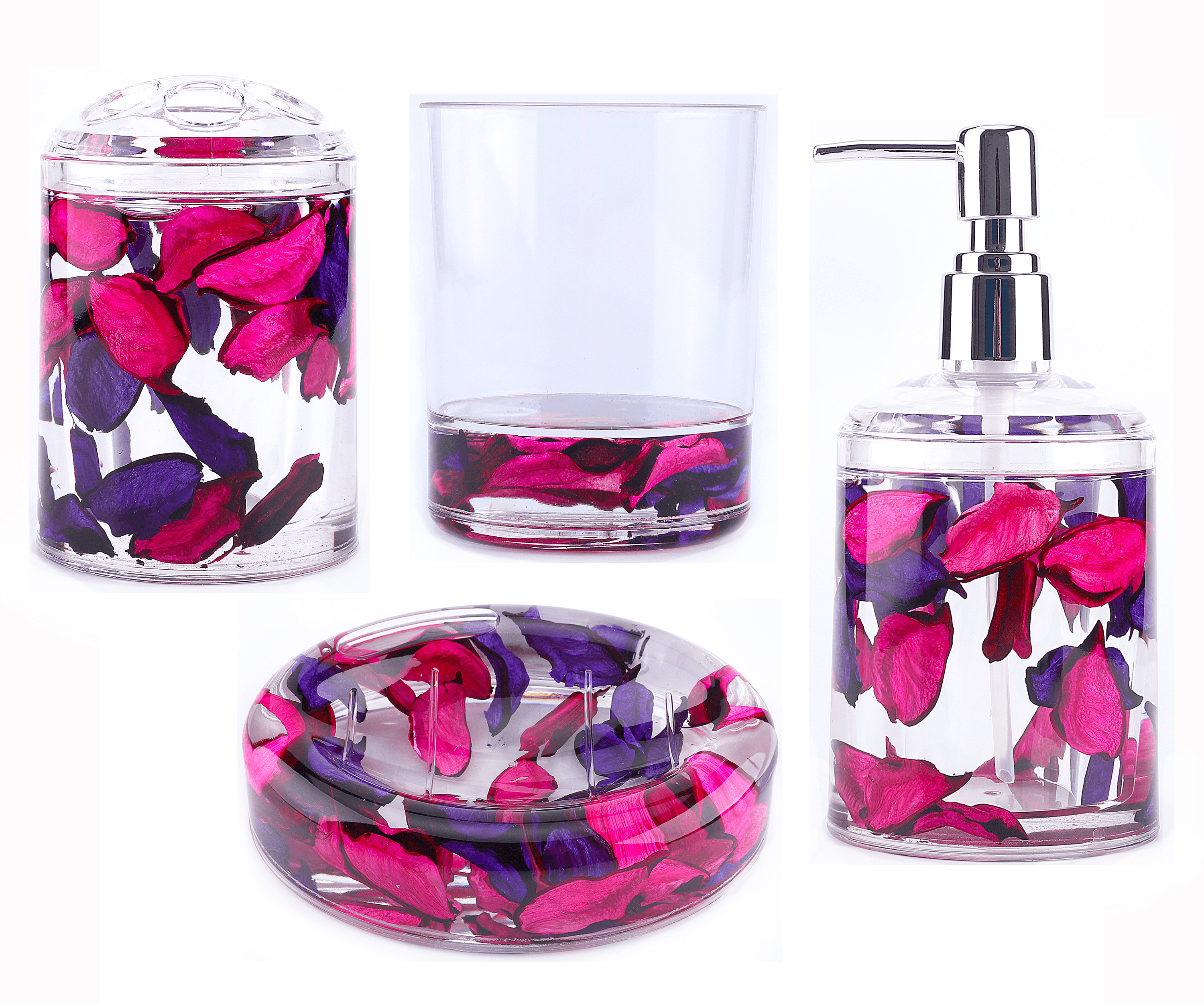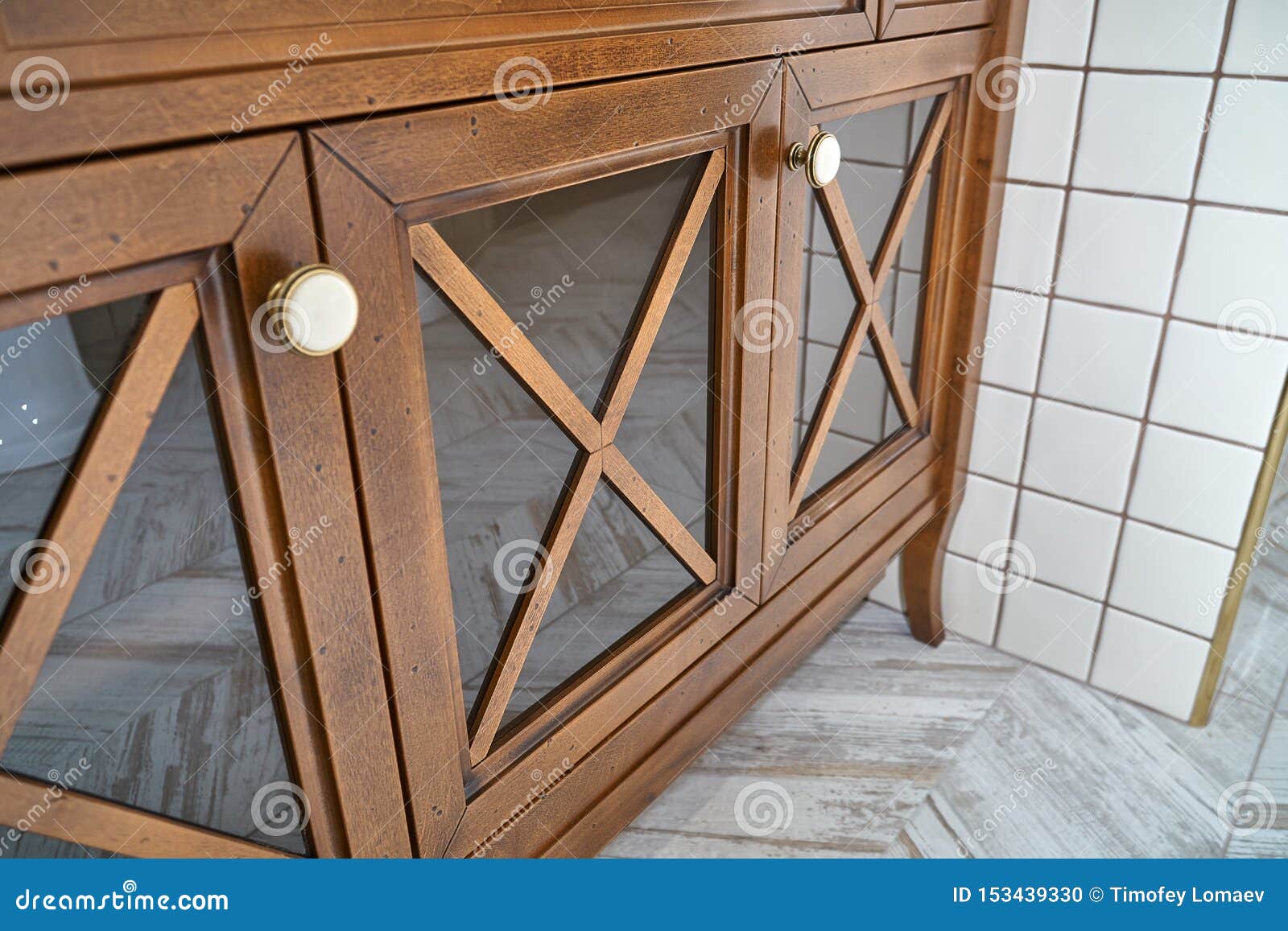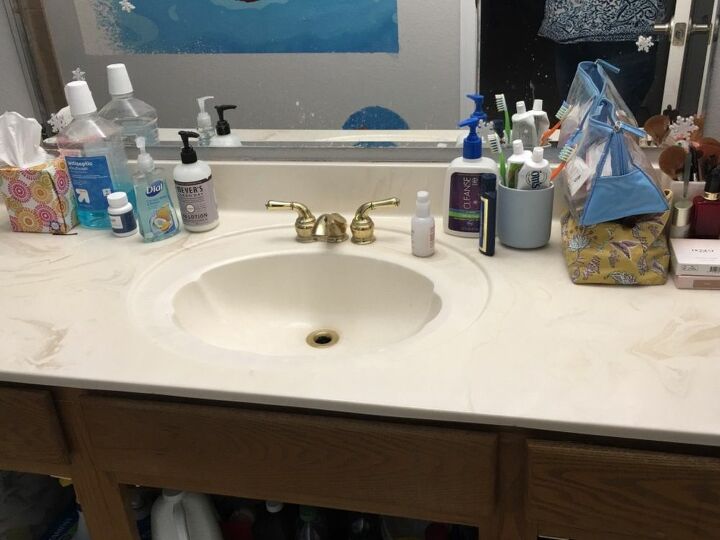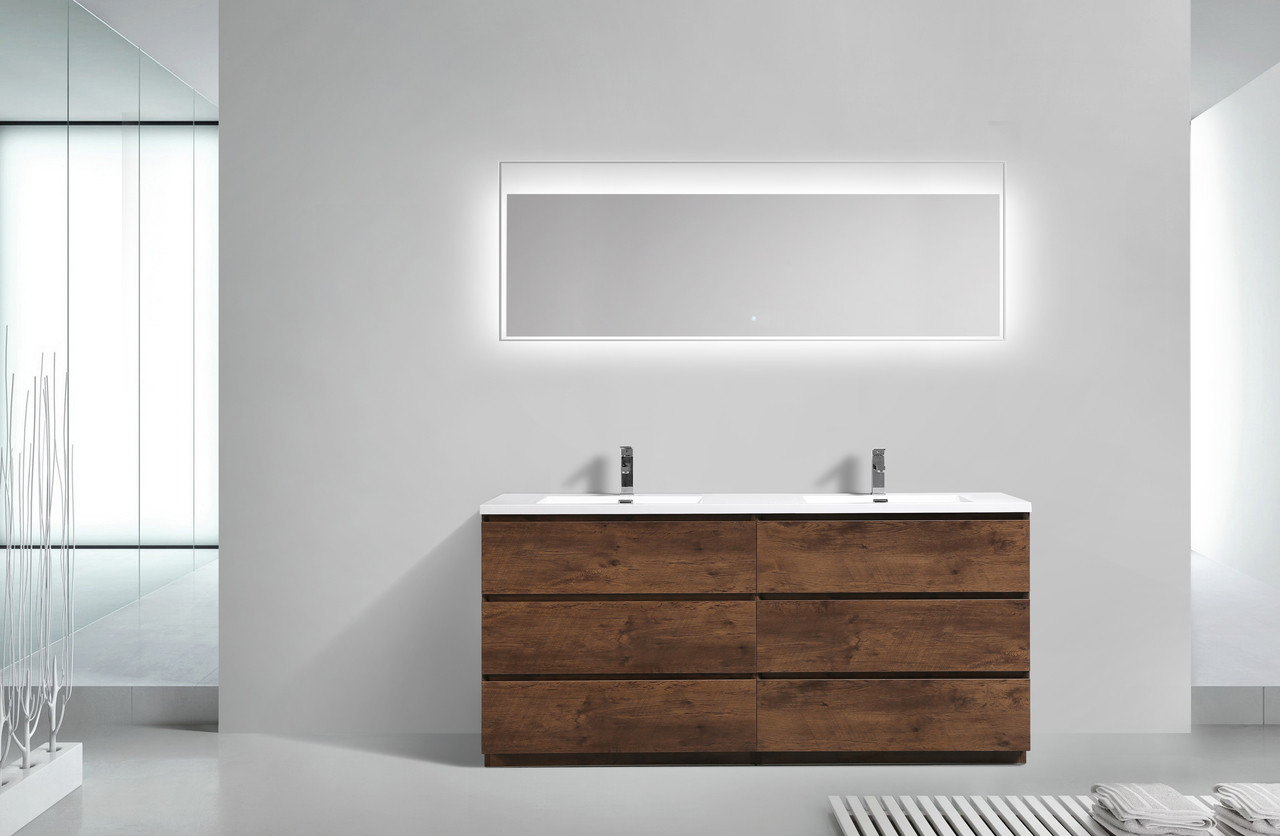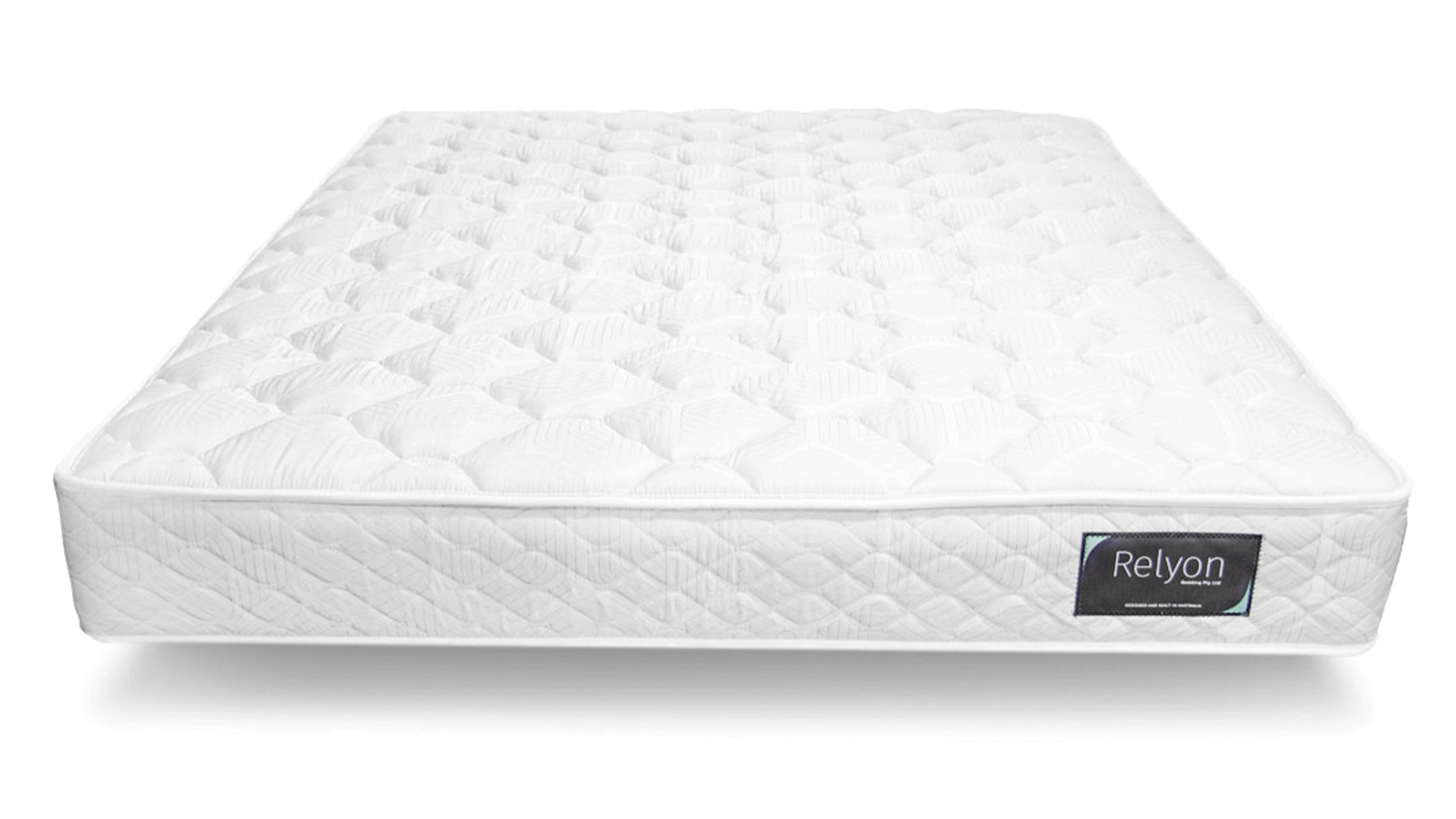When it comes to bathroom vanities, one of the most popular and versatile materials used is wood. This natural material adds warmth and character to any bathroom, making it a top choice for many homeowners. With different types of wood available, such as oak, walnut, and cherry, you can easily find a wooden bathroom vanity that suits your style and budget. Wooden bathroom vanities are not only aesthetically pleasing, but they are also durable and long-lasting. With proper care and maintenance, a wooden vanity can withstand moisture and humidity in a bathroom environment. It is also easy to customize and can be painted or stained to match your bathroom's color scheme. One of the main advantages of a wooden bathroom vanity is its versatility. It can be designed in a traditional, modern, or rustic style, making it suitable for any bathroom design. Wooden vanities also come in different sizes and configurations, making it easy to find one that fits your bathroom layout and storage needs. Some popular types of wooden bathroom vanities include solid wood vanities, which are made from a single piece of wood and are known for their durability and strength. Engineered wood vanities are made from different types of wood fibers and are a more affordable option. They are also resistant to warping and cracking.Wooden Bathroom Vanity
For a luxurious and elegant touch to your bathroom, a marble vanity is a perfect choice. Marble is a natural stone that comes in different colors and patterns, making each vanity unique. With its smooth and polished finish, marble adds a touch of sophistication to any bathroom. Aside from its aesthetic appeal, marble is also a durable material that can withstand regular use and moisture. It is also heat-resistant, making it a suitable choice for bathrooms with heated floors. However, it is important to note that marble is a porous material and can stain easily. Regular sealing and maintenance are necessary to keep your marble vanity looking pristine. Marble bathroom vanities come in different styles, from simple and minimalist to intricate and ornate designs. They are also available in various shapes and sizes, making it easy to find one that fits your bathroom layout. Some popular types of marble used for bathroom vanities include white Carrara marble, Calacatta marble, and emperador marble.Marble Bathroom Vanity
Another popular natural stone used for bathroom vanities is granite. Known for its durability and resistance to scratches and stains, granite is a practical and stylish choice for any bathroom. It is also available in a wide range of colors and patterns, making it easy to find one that matches your bathroom's design. Granite bathroom vanities are also heat-resistant, making them suitable for bathrooms with heated floors or hair styling tools. They are also easy to clean and maintain, making them a practical choice for busy households. Some popular types of granite used for bathroom vanities include black galaxy granite, absolute black granite, and bianco antico granite. When choosing a granite bathroom vanity, it is important to consider the thickness of the slab. Thicker slabs are more durable and can withstand regular use better than thinner ones. It is also important to choose a vanity with a polished finish to prevent water and stains from seeping into the stone.Granite Bathroom Vanity
A glass bathroom vanity adds a modern and sleek touch to any bathroom. With its reflective surface, it can make a small bathroom appear larger and more spacious. Glass vanities are also versatile and can be designed in different shapes and sizes, making it easy to find one that fits your bathroom's layout. Glass bathroom vanities are usually made from tempered glass, which is durable and resistant to scratches and cracks. They are also easy to clean and maintain, making them a popular choice for busy households. Some glass vanities come with a frosted or tinted finish, adding a touch of privacy to your bathroom. One of the main advantages of a glass bathroom vanity is its ability to blend in with any bathroom design. It can complement both modern and traditional styles, making it a versatile choice for any homeowner. However, it is important to note that glass vanities can be more fragile than other materials, so extra care must be taken when handling and cleaning them.Glass Bathroom Vanity
Porcelain bathroom vanities are a popular choice for their durability and resistance to scratches, stains, and moisture. This ceramic material is also known for its low maintenance, making it a practical choice for busy households. Porcelain vanities come in a variety of colors, patterns, and finishes, making it easy to find one that suits your bathroom's style. One of the main advantages of a porcelain bathroom vanity is its affordability. It is a budget-friendly option that still provides a sleek and modern look to any bathroom. It is also easy to clean and does not require sealing or special maintenance. Porcelain is a versatile material that can be molded into various shapes and sizes, making it suitable for any bathroom layout. Some popular types of porcelain used for bathroom vanities include white porcelain, porcelain with a marble finish, and textured porcelain.Porcelain Bathroom Vanity
Similar to porcelain, ceramic is another popular material used for bathroom vanities. Ceramic is a durable and non-porous material, making it resistant to stains and moisture. It is also easy to clean and does not require sealing or special maintenance. Ceramic bathroom vanities come in a variety of colors and finishes, making it easy to find one that matches your bathroom's design. They are also available in different shapes and sizes, making it suitable for any bathroom layout. Some popular types of ceramic used for bathroom vanities include glazed ceramic, unglazed ceramic, and hand-painted ceramic. One of the main advantages of a ceramic bathroom vanity is its affordability. It is a budget-friendly option that still provides a sleek and modern look to any bathroom. However, ceramic can be prone to chipping or cracking if not handled carefully.Ceramic Bathroom Vanity
Stone bathroom vanities are a luxurious and timeless choice for any bathroom. With a variety of natural stones to choose from, such as marble, travertine, and granite, you can add a touch of elegance and sophistication to your bathroom. Stone vanities are also known for their durability and resistance to moisture and stains. One of the main advantages of a stone bathroom vanity is its unique and natural beauty. Each piece of stone is different, making your vanity one-of-a-kind. Stone vanities also come in different finishes, such as polished, honed, and brushed, allowing you to customize the look of your vanity. When choosing a stone bathroom vanity, it is important to consider the type of stone and its maintenance requirements. Some stones, such as marble, require regular sealing and special cleaning products to maintain their appearance. It is also crucial to choose a reputable supplier to ensure the quality and authenticity of the stone.Stone Bathroom Vanity
For a modern and industrial look, a metal bathroom vanity is the way to go. Metal vanities are made from materials such as stainless steel, brass, and iron, adding a sleek and minimalist touch to any bathroom. They are also durable and resistant to moisture, making them suitable for a bathroom environment. Metal bathroom vanities come in different finishes, such as brushed, polished, and matte, allowing you to customize the look of your vanity. They are also available in different styles and configurations, making it easy to find one that fits your bathroom's layout and storage needs. One of the main advantages of a metal bathroom vanity is its versatility. It can be designed in a traditional, modern, or industrial style, making it suitable for any bathroom design. However, it is important to note that metal can be prone to rust if not properly maintained.Metal Bathroom Vanity
Laminate is a durable and budget-friendly material used for bathroom vanities. It is made from multiple layers of resin and paper, making it resistant to scratches, stains, and moisture. Laminate is also easy to clean and does not require special maintenance. Laminate bathroom vanities come in a variety of colors and patterns, allowing you to customize the look of your vanity. They are also available in different finishes, such as matte, glossy, and textured. Some popular types of laminate used for bathroom vanities include formica, wilsonart, and nevamar. One of the main advantages of a laminate bathroom vanity is its affordability. It is a budget-friendly option that still provides a sleek and modern look to any bathroom. However, it is important to note that laminate can be prone to chipping or peeling if not properly maintained.Laminate Bathroom Vanity
Acrylic is a lightweight and durable material used for bathroom vanities. It is made from a blend of plastic and resin, making it resistant to moisture and stains. Acrylic is also easy to clean and does not require special maintenance. Acrylic bathroom vanities come in a variety of colors and finishes, allowing you to customize the look of your vanity. They are also available in different styles and configurations, making it easy to find one that fits your bathroom's layout and storage needs. Some popular types of acrylic used for bathroom vanities include solid surface acrylic, acrylic with a wood finish, and acrylic with a marble finish. One of the main advantages of an acrylic bathroom vanity is its versatility. It can be designed in a traditional, modern, or minimalist style, making it suitable for any bathroom design. However, it is important to note that acrylic can be prone to scratches and discoloration over time.Acrylic Bathroom Vanity
1. Wood
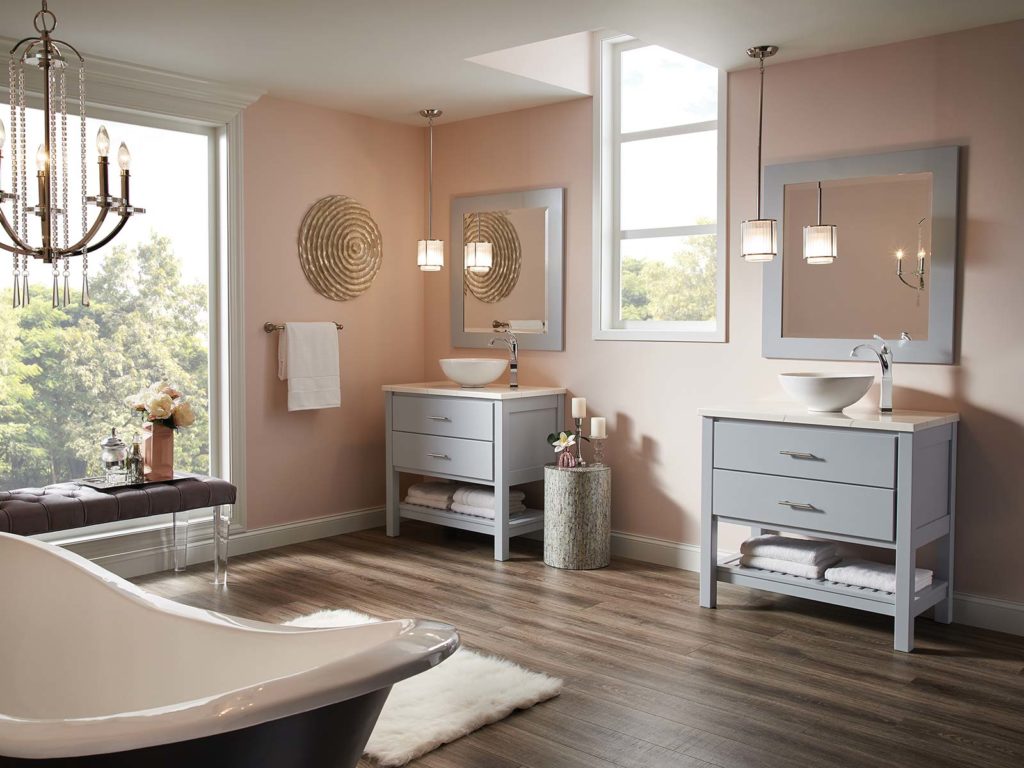
Types of Wood Used
 Wood is a classic and popular choice for bathroom vanities.
Some of the most commonly used woods include oak, maple, cherry, and walnut.
Each type of wood has its own unique characteristics and can add warmth and elegance to your bathroom design.
Wood is a classic and popular choice for bathroom vanities.
Some of the most commonly used woods include oak, maple, cherry, and walnut.
Each type of wood has its own unique characteristics and can add warmth and elegance to your bathroom design.
Advantages
 Wood is a durable and long-lasting material that can withstand moisture and humidity in the bathroom. It can also be easily customized with different stains and finishes to match your preferred style.
Wooden vanities also add a natural and warm touch to any bathroom.
Wood is a durable and long-lasting material that can withstand moisture and humidity in the bathroom. It can also be easily customized with different stains and finishes to match your preferred style.
Wooden vanities also add a natural and warm touch to any bathroom.
Disadvantages
 While wood is generally resistant to moisture, it does require regular maintenance to prevent warping or cracking. It is also more expensive than other materials and may not be the best choice for a tight budget.
While wood is generally resistant to moisture, it does require regular maintenance to prevent warping or cracking. It is also more expensive than other materials and may not be the best choice for a tight budget.
2. Marble

Types of Marble Used
 Marble is a luxurious and elegant choice for bathroom vanities.
Carrara, Calacatta, and Statuario are some popular types of marble used for vanities.
Each one has its own unique veining and color variations, adding a touch of luxury to any bathroom design.
Marble is a luxurious and elegant choice for bathroom vanities.
Carrara, Calacatta, and Statuario are some popular types of marble used for vanities.
Each one has its own unique veining and color variations, adding a touch of luxury to any bathroom design.
Advantages
 Marble is a highly durable and heat-resistant material, making it ideal for use in the bathroom. It also adds a timeless and classic look to any space and can increase the value of your home.
Marble vanities are also easy to clean and maintain.
Marble is a highly durable and heat-resistant material, making it ideal for use in the bathroom. It also adds a timeless and classic look to any space and can increase the value of your home.
Marble vanities are also easy to clean and maintain.
Disadvantages
 The main downside of marble is its high cost, which may not be feasible for all budgets. It also requires regular sealing to prevent staining and etching from acidic substances.
The main downside of marble is its high cost, which may not be feasible for all budgets. It also requires regular sealing to prevent staining and etching from acidic substances.
3. Quartz

Types of Quartz Used
 Quartz is a man-made material that is becoming increasingly popular for bathroom vanities.
Brands like Caesarstone, Silestone, and Cambria offer a range of quartz options in various colors and patterns.
Quartz is a man-made material that is becoming increasingly popular for bathroom vanities.
Brands like Caesarstone, Silestone, and Cambria offer a range of quartz options in various colors and patterns.
Advantages
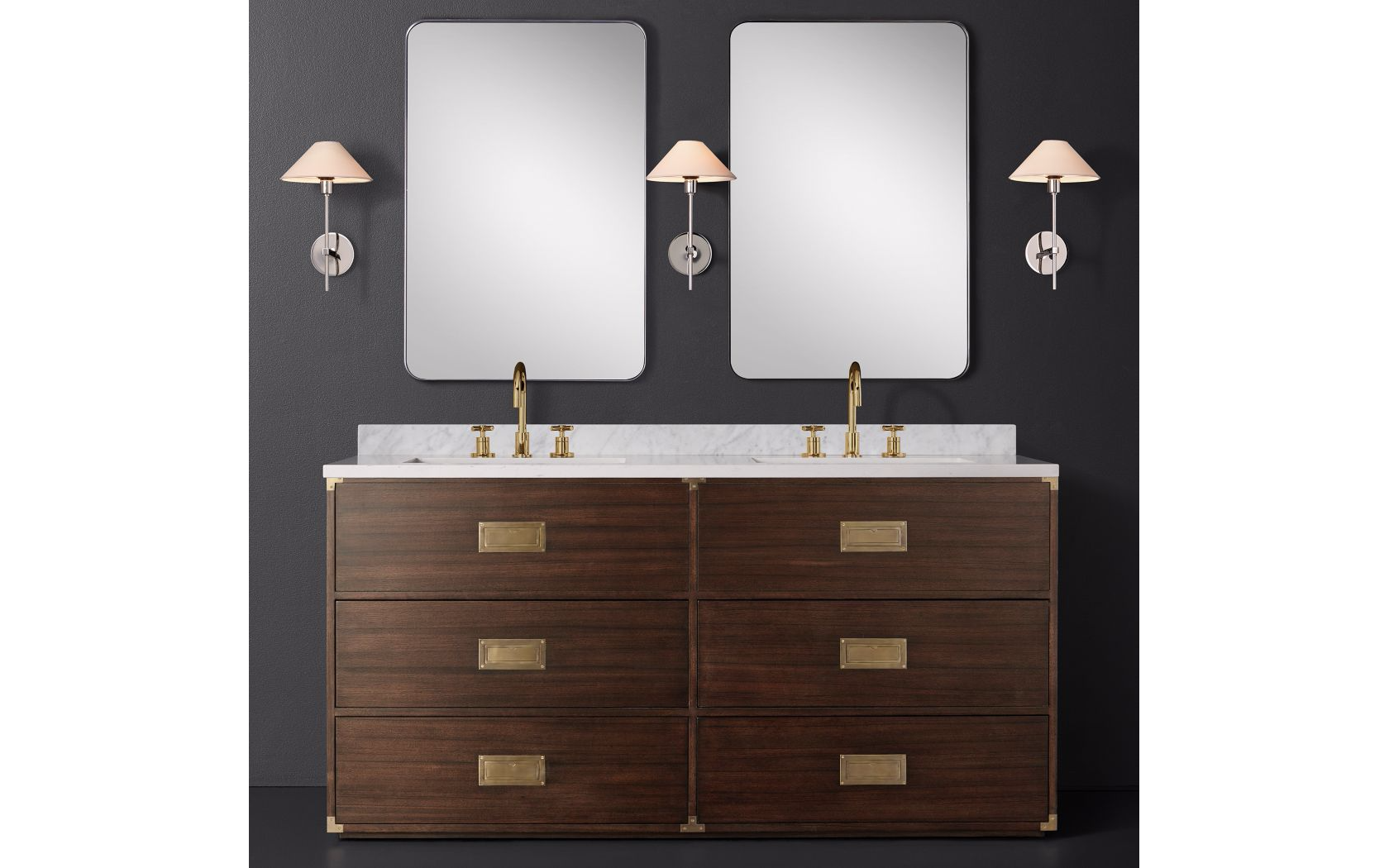 Quartz is a non-porous material, making it highly resistant to stains and bacteria. It is also very low maintenance, as it does not require any sealing.
Quartz vanities offer a sleek and modern look and can be customized to fit any design aesthetic.
Quartz is a non-porous material, making it highly resistant to stains and bacteria. It is also very low maintenance, as it does not require any sealing.
Quartz vanities offer a sleek and modern look and can be customized to fit any design aesthetic.
Disadvantages
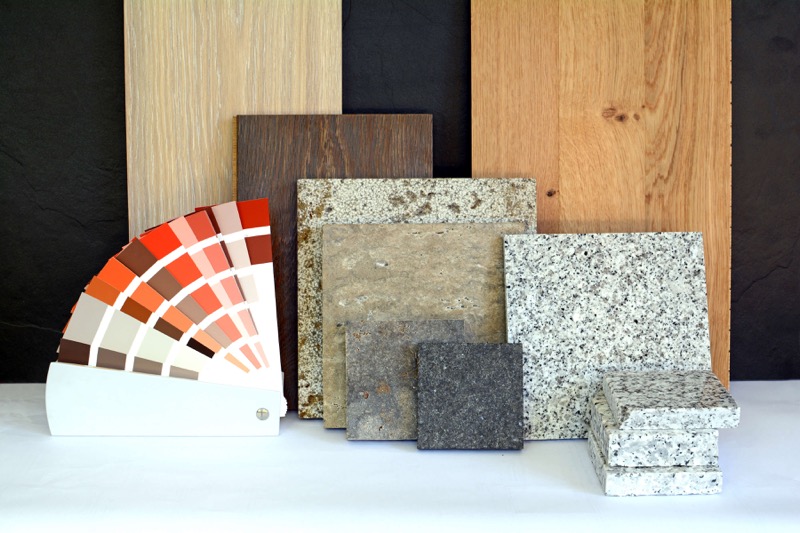 Compared to other materials, quartz can be on the pricier side. It is also not as heat-resistant as marble or granite and may get damaged if exposed to high temperatures.
Compared to other materials, quartz can be on the pricier side. It is also not as heat-resistant as marble or granite and may get damaged if exposed to high temperatures.
Conclusion
 In conclusion, the choice of material for your bathroom vanity ultimately depends on your budget, style preferences, and level of maintenance you are willing to commit to.
Wood, marble, and quartz are just some of the top materials used in bathroom vanities, each with their own unique advantages and disadvantages.
Consider all aspects carefully before making your decision to ensure you create a functional and beautiful bathroom space that meets your needs and reflects your personal style.
In conclusion, the choice of material for your bathroom vanity ultimately depends on your budget, style preferences, and level of maintenance you are willing to commit to.
Wood, marble, and quartz are just some of the top materials used in bathroom vanities, each with their own unique advantages and disadvantages.
Consider all aspects carefully before making your decision to ensure you create a functional and beautiful bathroom space that meets your needs and reflects your personal style.

